
Home » Tips for Teachers » 7 Research-Based Reasons Why Students Should Not Have Homework: Academic Insights, Opposing Perspectives & Alternatives

7 Research-Based Reasons Why Students Should Not Have Homework: Academic Insights, Opposing Perspectives & Alternatives
In recent years, the question of why students should not have homework has become a topic of intense debate among educators, parents, and students themselves. This discussion stems from a growing body of research that challenges the traditional view of homework as an essential component of academic success. The notion that homework is an integral part of learning is being reevaluated in light of new findings about its effectiveness and impact on students’ overall well-being.
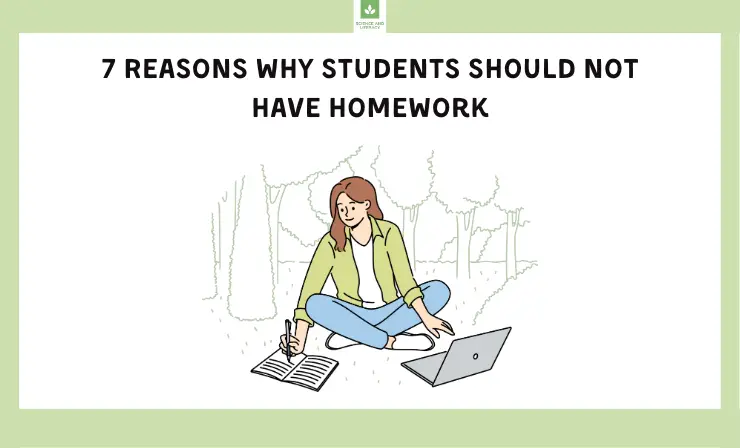
The push against homework is not just about the hours spent on completing assignments; it’s about rethinking the role of education in fostering the well-rounded development of young individuals. Critics argue that homework, particularly in excessive amounts, can lead to negative outcomes such as stress, burnout, and a diminished love for learning. Moreover, it often disproportionately affects students from disadvantaged backgrounds, exacerbating educational inequities. The debate also highlights the importance of allowing children to have enough free time for play, exploration, and family interaction, which are crucial for their social and emotional development.
Checking 13yo’s math homework & I have just one question. I can catch mistakes & help her correct. But what do kids do when their parent isn’t an Algebra teacher? Answer: They get frustrated. Quit. Get a bad grade. Think they aren’t good at math. How is homework fair??? — Jay Wamsted (@JayWamsted) March 24, 2022
As we delve into this discussion, we explore various facets of why reducing or even eliminating homework could be beneficial. We consider the research, weigh the pros and cons, and examine alternative approaches to traditional homework that can enhance learning without overburdening students.
Once you’ve finished this article, you’ll know:
- Insights from Teachers and Education Industry Experts →
- 7 Reasons Why Students Should Not Have Homework →
- Opposing Views on Homework Practices →
- Exploring Alternatives to Homework →
Insights from Teachers and Education Industry Experts: Diverse Perspectives on Homework
In the ongoing conversation about the role and impact of homework in education, the perspectives of those directly involved in the teaching process are invaluable. Teachers and education industry experts bring a wealth of experience and insights from the front lines of learning. Their viewpoints, shaped by years of interaction with students and a deep understanding of educational methodologies, offer a critical lens through which we can evaluate the effectiveness and necessity of homework in our current educational paradigm.
Check out this video featuring Courtney White, a high school language arts teacher who gained widespread attention for her explanation of why she chooses not to assign homework.
Here are the insights and opinions from various experts in the educational field on this topic:
“I teach 1st grade. I had parents ask for homework. I explained that I don’t give homework. Home time is family time. Time to play, cook, explore and spend time together. I do send books home, but there is no requirement or checklist for reading them. Read them, enjoy them, and return them when your child is ready for more. I explained that as a parent myself, I know they are busy—and what a waste of energy it is to sit and force their kids to do work at home—when they could use that time to form relationships and build a loving home. Something kids need more than a few math problems a week.” — Colleen S. , 1st grade teacher
“The lasting educational value of homework at that age is not proven. A kid says the times tables [at school] because he studied the times tables last night. But over a long period of time, a kid who is drilled on the times tables at school, rather than as homework, will also memorize their times tables. We are worried about young children and their social emotional learning. And that has to do with physical activity, it has to do with playing with peers, it has to do with family time. All of those are very important and can be removed by too much homework.” — David Bloomfield , education professor at Brooklyn College and the City University of New York graduate center
“Homework in primary school has an effect of around zero. In high school it’s larger. (…) Which is why we need to get it right. Not why we need to get rid of it. It’s one of those lower hanging fruit that we should be looking in our primary schools to say, ‘Is it really making a difference?’” — John Hattie , professor
”Many kids are working as many hours as their overscheduled parents and it is taking a toll – psychologically and in many other ways too. We see kids getting up hours before school starts just to get their homework done from the night before… While homework may give kids one more responsibility, it ignores the fact that kids do not need to grow up and become adults at ages 10 or 12. With schools cutting recess time or eliminating playgrounds, kids absorb every single stress there is, only on an even higher level. Their brains and bodies need time to be curious, have fun, be creative and just be a kid.” — Pat Wayman, teacher and CEO of HowtoLearn.com
7 Reasons Why Students Should Not Have Homework
Let’s delve into the reasons against assigning homework to students. Examining these arguments offers important perspectives on the wider educational and developmental consequences of homework practices.
1. Elevated Stress and Health Consequences
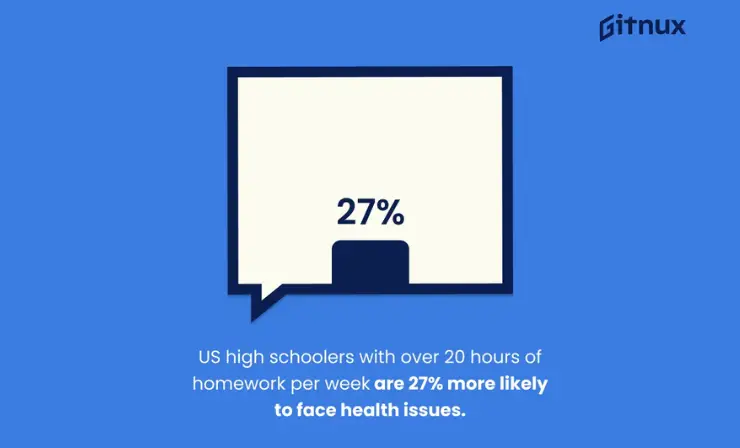
The ongoing debate about homework often focuses on its educational value, but a vital aspect that cannot be overlooked is the significant stress and health consequences it brings to students. In the context of American life, where approximately 70% of people report moderate or extreme stress due to various factors like mass shootings, healthcare affordability, discrimination, racism, sexual harassment, climate change, presidential elections, and the need to stay informed, the additional burden of homework further exacerbates this stress, particularly among students.
Key findings and statistics reveal a worrying trend:
- Overwhelming Student Stress: A staggering 72% of students report being often or always stressed over schoolwork, with a concerning 82% experiencing physical symptoms due to this stress.
- Serious Health Issues: Symptoms linked to homework stress include sleep deprivation, headaches, exhaustion, weight loss, and stomach problems.
- Sleep Deprivation: Despite the National Sleep Foundation recommending 8.5 to 9.25 hours of sleep for healthy adolescent development, students average just 6.80 hours of sleep on school nights. About 68% of students stated that schoolwork often or always prevented them from getting enough sleep, which is critical for their physical and mental health.
- Turning to Unhealthy Coping Mechanisms: Alarmingly, the pressure from excessive homework has led some students to turn to alcohol and drugs as a way to cope with stress.
This data paints a concerning picture. Students, already navigating a world filled with various stressors, find themselves further burdened by homework demands. The direct correlation between excessive homework and health issues indicates a need for reevaluation. The goal should be to ensure that homework if assigned, adds value to students’ learning experiences without compromising their health and well-being.
By addressing the issue of homework-related stress and health consequences, we can take a significant step toward creating a more nurturing and effective educational environment. This environment would not only prioritize academic achievement but also the overall well-being and happiness of students, preparing them for a balanced and healthy life both inside and outside the classroom.
2. Inequitable Impact and Socioeconomic Disparities
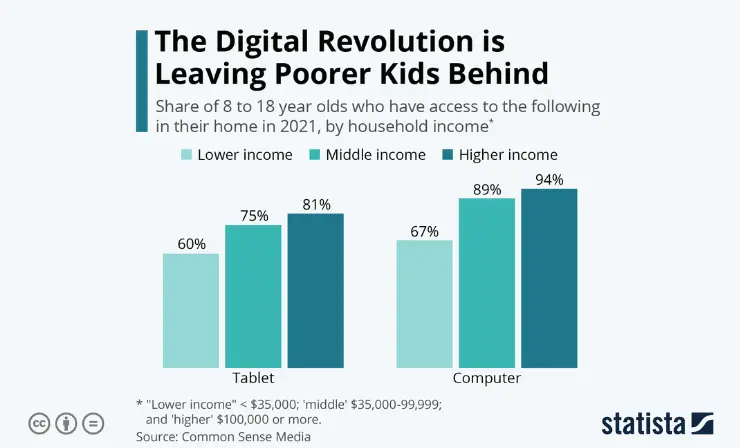
In the discourse surrounding educational equity, homework emerges as a factor exacerbating socioeconomic disparities, particularly affecting students from lower-income families and those with less supportive home environments. While homework is often justified as a means to raise academic standards and promote equity, its real-world impact tells a different story.
The inequitable burden of homework becomes starkly evident when considering the resources required to complete it, especially in the digital age. Homework today often necessitates a computer and internet access – resources not readily available to all students. This digital divide significantly disadvantages students from lower-income backgrounds, deepening the chasm between them and their more affluent peers.
Key points highlighting the disparities:
- Digital Inequity: Many students lack access to necessary technology for homework, with low-income families disproportionately affected.
- Impact of COVID-19: The pandemic exacerbated these disparities as education shifted online, revealing the extent of the digital divide.
- Educational Outcomes Tied to Income: A critical indicator of college success is linked more to family income levels than to rigorous academic preparation. Research indicates that while 77% of students from high-income families graduate from highly competitive colleges, only 9% from low-income families achieve the same . This disparity suggests that the pressure of heavy homework loads, rather than leveling the playing field, may actually hinder the chances of success for less affluent students.
Moreover, the approach to homework varies significantly across different types of schools. While some rigorous private and preparatory schools in both marginalized and affluent communities assign extreme levels of homework, many progressive schools focusing on holistic learning and self-actualization opt for no homework, yet achieve similar levels of college and career success. This contrast raises questions about the efficacy and necessity of heavy homework loads in achieving educational outcomes.
The issue of homework and its inequitable impact is not just an academic concern; it is a reflection of broader societal inequalities. By continuing practices that disproportionately burden students from less privileged backgrounds, the educational system inadvertently perpetuates the very disparities it seeks to overcome.
3. Negative Impact on Family Dynamics
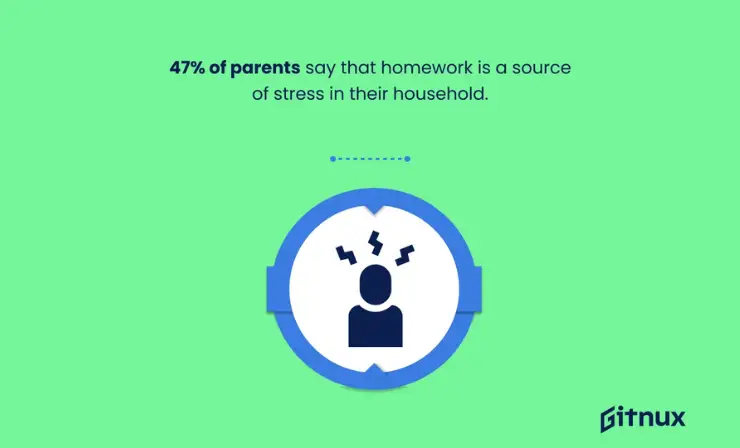
Homework, a staple of the educational system, is often perceived as a necessary tool for academic reinforcement. However, its impact extends beyond the realm of academics, significantly affecting family dynamics. The negative repercussions of homework on the home environment have become increasingly evident, revealing a troubling pattern that can lead to conflict, mental health issues, and domestic friction.
A study conducted in 2015 involving 1,100 parents sheds light on the strain homework places on family relationships. The findings are telling:
- Increased Likelihood of Conflicts: Families where parents did not have a college degree were 200% more likely to experience fights over homework.
- Misinterpretations and Misunderstandings: Parents often misinterpret their children’s difficulties with homework as a lack of attention in school, leading to feelings of frustration and mistrust on both sides.
- Discriminatory Impact: The research concluded that the current approach to homework disproportionately affects children whose parents have lower educational backgrounds, speak English as a second language, or belong to lower-income groups.
The issue is not confined to specific demographics but is a widespread concern. Samantha Hulsman, a teacher featured in Education Week Teacher , shared her personal experience with the toll that homework can take on family time. She observed that a seemingly simple 30-minute assignment could escalate into a three-hour ordeal, causing stress and strife between parents and children. Hulsman’s insights challenge the traditional mindset about homework, highlighting a shift towards the need for skills such as collaboration and problem-solving over rote memorization of facts.
The need of the hour is to reassess the role and amount of homework assigned to students. It’s imperative to find a balance that facilitates learning and growth without compromising the well-being of the family unit. Such a reassessment would not only aid in reducing domestic conflicts but also contribute to a more supportive and nurturing environment for children’s overall development.
4. Consumption of Free Time
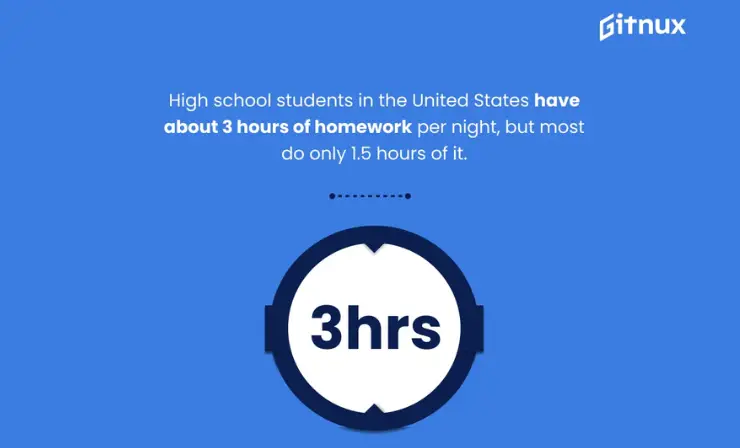
In recent years, a growing chorus of voices has raised concerns about the excessive burden of homework on students, emphasizing how it consumes their free time and impedes their overall well-being. The issue is not just the quantity of homework, but its encroachment on time that could be used for personal growth, relaxation, and family bonding.
Authors Sara Bennett and Nancy Kalish , in their book “The Case Against Homework,” offer an insightful window into the lives of families grappling with the demands of excessive homework. They share stories from numerous interviews conducted in the mid-2000s, highlighting the universal struggle faced by families across different demographics. A poignant account from a parent in Menlo Park, California, describes nightly sessions extending until 11 p.m., filled with stress and frustration, leading to a soured attitude towards school in both the child and the parent. This narrative is not isolated, as about one-third of the families interviewed expressed feeling crushed by the overwhelming workload.
Key points of concern:
- Excessive Time Commitment: Students, on average, spend over 6 hours in school each day, and homework adds significantly to this time, leaving little room for other activities.
- Impact on Extracurricular Activities: Homework infringes upon time for sports, music, art, and other enriching experiences, which are as crucial as academic courses.
- Stifling Creativity and Self-Discovery: The constant pressure of homework limits opportunities for students to explore their interests and learn new skills independently.
The National Education Association (NEA) and the National PTA (NPTA) recommend a “10 minutes of homework per grade level” standard, suggesting a more balanced approach. However, the reality often far exceeds this guideline, particularly for older students. The impact of this overreach is profound, affecting not just academic performance but also students’ attitudes toward school, their self-confidence, social skills, and overall quality of life.
Furthermore, the intense homework routine’s effectiveness is doubtful, as it can overwhelm students and detract from the joy of learning. Effective learning builds on prior knowledge in an engaging way, but excessive homework in a home setting may be irrelevant and uninteresting. The key challenge is balancing homework to enhance learning without overburdening students, allowing time for holistic growth and activities beyond academics. It’s crucial to reassess homework policies to support well-rounded development.
5. Challenges for Students with Learning Disabilities
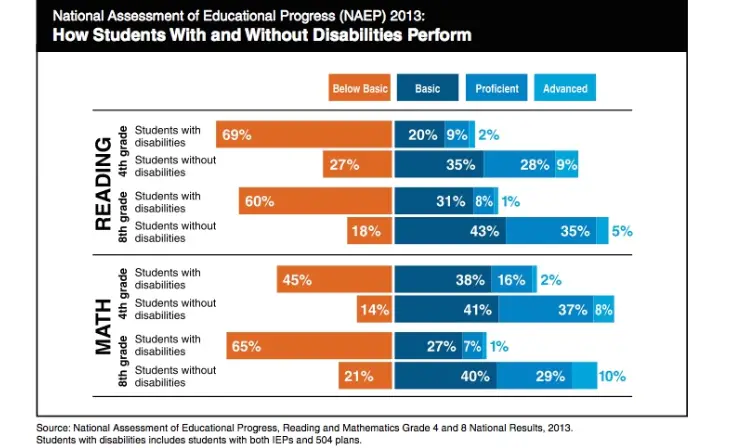
Homework, a standard educational tool, poses unique challenges for students with learning disabilities, often leading to a frustrating and disheartening experience. These challenges go beyond the typical struggles faced by most students and can significantly impede their educational progress and emotional well-being.
Child psychologist Kenneth Barish’s insights in Psychology Today shed light on the complex relationship between homework and students with learning disabilities:
- Homework as a Painful Endeavor: For students with learning disabilities, completing homework can be likened to “running with a sprained ankle.” It’s a task that, while doable, is fraught with difficulty and discomfort.
- Misconceptions about Laziness: Often, children who struggle with homework are perceived as lazy. However, Barish emphasizes that these students are more likely to be frustrated, discouraged, or anxious rather than unmotivated.
- Limited Improvement in School Performance: The battles over homework rarely translate into significant improvement in school for these children, challenging the conventional notion of homework as universally beneficial.
These points highlight the need for a tailored approach to homework for students with learning disabilities. It’s crucial to recognize that the traditional homework model may not be the most effective or appropriate method for facilitating their learning. Instead, alternative strategies that accommodate their unique needs and learning styles should be considered.
In conclusion, the conventional homework paradigm needs reevaluation, particularly concerning students with learning disabilities. By understanding and addressing their unique challenges, educators can create a more inclusive and supportive educational environment. This approach not only aids in their academic growth but also nurtures their confidence and overall development, ensuring that they receive an equitable and empathetic educational experience.
6. Critique of Underlying Assumptions about Learning
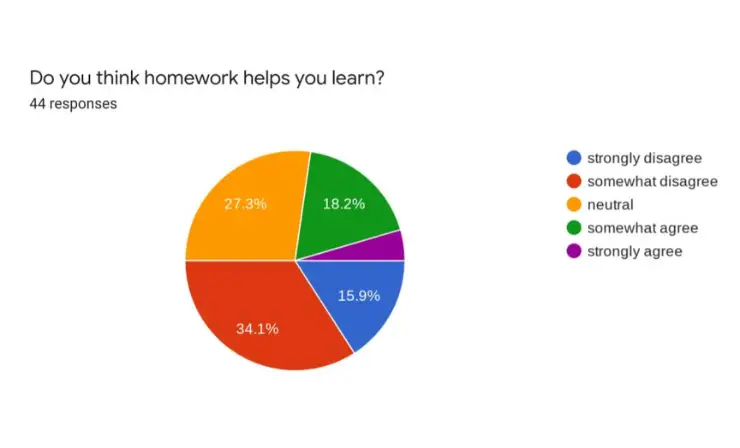
The longstanding belief in the educational sphere that more homework automatically translates to more learning is increasingly being challenged. Critics argue that this assumption is not only flawed but also unsupported by solid evidence, questioning the efficacy of homework as an effective learning tool.
Alfie Kohn , a prominent critic of homework, aptly compares students to vending machines in this context, suggesting that the expectation of inserting an assignment and automatically getting out of learning is misguided. Kohn goes further, labeling homework as the “greatest single extinguisher of children’s curiosity.” This critique highlights a fundamental issue: the potential of homework to stifle the natural inquisitiveness and love for learning in children.
The lack of concrete evidence supporting the effectiveness of homework is evident in various studies:
- Marginal Effectiveness of Homework: A study involving 28,051 high school seniors found that the effectiveness of homework was marginal, and in some cases, it was counterproductive, leading to more academic problems than solutions.
- No Correlation with Academic Achievement: Research in “ National Differences, Global Similarities ” showed no correlation between homework and academic achievement in elementary students, and any positive correlation in middle or high school diminished with increasing homework loads.
- Increased Academic Pressure: The Teachers College Record published findings that homework adds to academic pressure and societal stress, exacerbating performance gaps between students from different socioeconomic backgrounds.
These findings bring to light several critical points:
- Quality Over Quantity: According to a recent article in Monitor on Psychology , experts concur that the quality of homework assignments, along with the quality of instruction, student motivation, and inherent ability, is more crucial for academic success than the quantity of homework.
- Counterproductive Nature of Excessive Homework: Excessive homework can lead to more academic challenges, particularly for students already facing pressures from other aspects of their lives.
- Societal Stress and Performance Gaps: Homework can intensify societal stress and widen the academic performance divide.
The emerging consensus from these studies suggests that the traditional approach to homework needs rethinking. Rather than focusing on the quantity of assignments, educators should consider the quality and relevance of homework, ensuring it truly contributes to learning and development. This reassessment is crucial for fostering an educational environment that nurtures curiosity and a love for learning, rather than extinguishing it.
7. Issues with Homework Enforcement, Reliability, and Temptation to Cheat
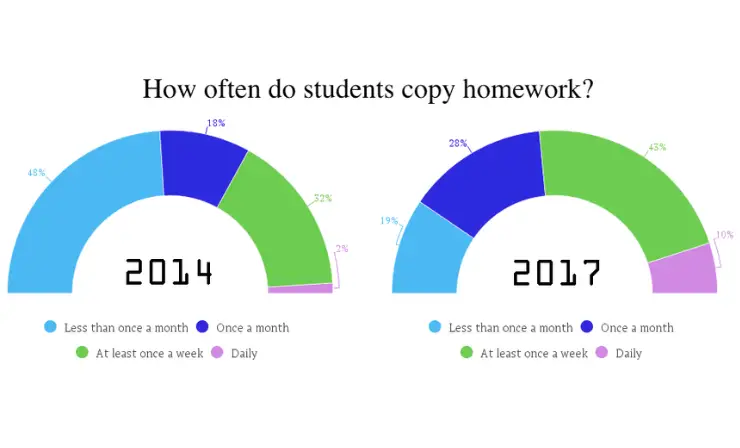
In the academic realm, the enforcement of homework is a subject of ongoing debate, primarily due to its implications on student integrity and the true value of assignments. The challenges associated with homework enforcement often lead to unintended yet significant issues, such as cheating, copying, and a general undermining of educational values.
Key points highlighting enforcement challenges:
- Difficulty in Enforcing Completion: Ensuring that students complete their homework can be a complex task, and not completing homework does not always correlate with poor grades.
- Reliability of Homework Practice: The reliability of homework as a practice tool is undermined when students, either out of desperation or lack of understanding, choose shortcuts over genuine learning. This approach can lead to the opposite of the intended effect, especially when assignments are not well-aligned with the students’ learning levels or interests.
- Temptation to Cheat: The issue of cheating is particularly troubling. According to a report by The Chronicle of Higher Education , under the pressure of at-home assignments, many students turn to copying others’ work, plagiarizing, or using creative technological “hacks.” This tendency not only questions the integrity of the learning process but also reflects the extreme stress that homework can induce.
- Parental Involvement in Completion: As noted in The American Journal of Family Therapy , this raises concerns about the authenticity of the work submitted. When parents complete assignments for their children, it not only deprives the students of the opportunity to learn but also distorts the purpose of homework as a learning aid.
In conclusion, the challenges of homework enforcement present a complex problem that requires careful consideration. The focus should shift towards creating meaningful, manageable, and quality-driven assignments that encourage genuine learning and integrity, rather than overwhelming students and prompting counterproductive behaviors.
Addressing Opposing Views on Homework Practices
While opinions on homework policies are diverse, understanding different viewpoints is crucial. In the following sections, we will examine common arguments supporting homework assignments, along with counterarguments that offer alternative perspectives on this educational practice.
1. Improvement of Academic Performance

Homework is commonly perceived as a means to enhance academic performance, with the belief that it directly contributes to better grades and test scores. This view posits that through homework, students reinforce what they learn in class, leading to improved understanding and retention, which ultimately translates into higher academic achievement.
However, the question of why students should not have homework becomes pertinent when considering the complex relationship between homework and academic performance. Studies have indicated that excessive homework doesn’t necessarily equate to higher grades or test scores. Instead, too much homework can backfire, leading to stress and fatigue that adversely affect a student’s performance. Reuters highlights an intriguing correlation suggesting that physical activity may be more conducive to academic success than additional homework, underscoring the importance of a holistic approach to education that prioritizes both physical and mental well-being for enhanced academic outcomes.
2. Reinforcement of Learning
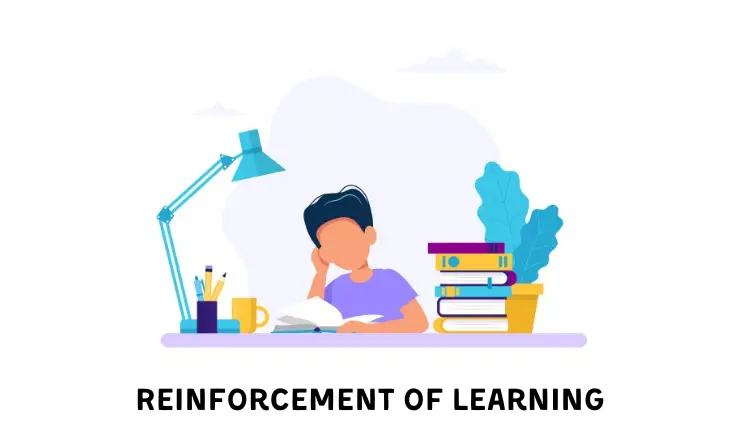
Homework is traditionally viewed as a tool to reinforce classroom learning, enabling students to practice and retain material. However, research suggests its effectiveness is ambiguous. In instances where homework is well-aligned with students’ abilities and classroom teachings, it can indeed be beneficial. Particularly for younger students , excessive homework can cause burnout and a loss of interest in learning, counteracting its intended purpose.
Furthermore, when homework surpasses a student’s capability, it may induce frustration and confusion rather than aid in learning. This challenges the notion that more homework invariably leads to better understanding and retention of educational content.
3. Development of Time Management Skills

Homework is often considered a crucial tool in helping students develop important life skills such as time management and organization. The idea is that by regularly completing assignments, students learn to allocate their time efficiently and organize their tasks effectively, skills that are invaluable in both academic and personal life.
However, the impact of homework on developing these skills is not always positive. For younger students, especially, an overwhelming amount of homework can be more of a hindrance than a help. Instead of fostering time management and organizational skills, an excessive workload often leads to stress and anxiety . These negative effects can impede the learning process and make it difficult for students to manage their time and tasks effectively, contradicting the original purpose of homework.
4. Preparation for Future Academic Challenges

Homework is often touted as a preparatory tool for future academic challenges that students will encounter in higher education and their professional lives. The argument is that by tackling homework, students build a foundation of knowledge and skills necessary for success in more advanced studies and in the workforce, fostering a sense of readiness and confidence.
Contrarily, an excessive homework load, especially from a young age, can have the opposite effect . It can instill a negative attitude towards education, dampening students’ enthusiasm and willingness to embrace future academic challenges. Overburdening students with homework risks disengagement and loss of interest, thereby defeating the purpose of preparing them for future challenges. Striking a balance in the amount and complexity of homework is crucial to maintaining student engagement and fostering a positive attitude towards ongoing learning.
5. Parental Involvement in Education
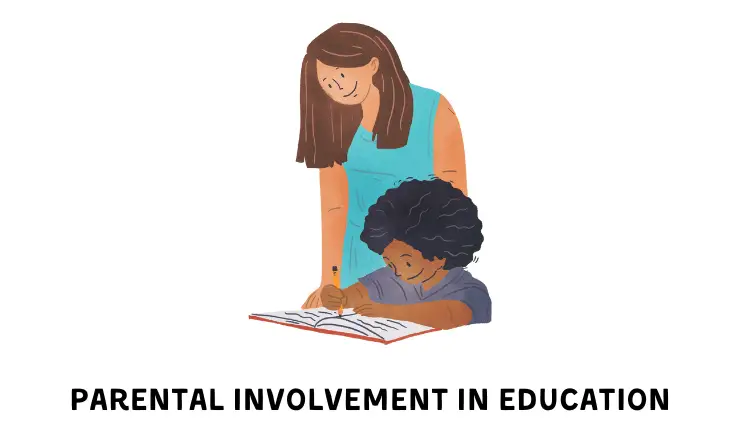
Homework often acts as a vital link connecting parents to their child’s educational journey, offering insights into the school’s curriculum and their child’s learning process. This involvement is key in fostering a supportive home environment and encouraging a collaborative relationship between parents and the school. When parents understand and engage with what their children are learning, it can significantly enhance the educational experience for the child.
However, the line between involvement and over-involvement is thin. When parents excessively intervene by completing their child’s homework, it can have adverse effects . Such actions not only diminish the educational value of homework but also rob children of the opportunity to develop problem-solving skills and independence. This over-involvement, coupled with disparities in parental ability to assist due to variations in time, knowledge, or resources, may lead to unequal educational outcomes, underlining the importance of a balanced approach to parental participation in homework.
Exploring Alternatives to Homework and Finding a Middle Ground

In the ongoing debate about the role of homework in education, it’s essential to consider viable alternatives and strategies to minimize its burden. While completely eliminating homework may not be feasible for all educators, there are several effective methods to reduce its impact and offer more engaging, student-friendly approaches to learning.
Alternatives to Traditional Homework
- Project-Based Learning: This method focuses on hands-on, long-term projects where students explore real-world problems. It encourages creativity, critical thinking, and collaborative skills, offering a more engaging and practical learning experience than traditional homework. For creative ideas on school projects, especially related to the solar system, be sure to explore our dedicated article on solar system projects .
- Flipped Classrooms: Here, students are introduced to new content through videos or reading materials at home and then use class time for interactive activities. This approach allows for more personalized and active learning during school hours.
- Reading for Pleasure: Encouraging students to read books of their choice can foster a love for reading and improve literacy skills without the pressure of traditional homework assignments. This approach is exemplified by Marion County, Florida , where public schools implemented a no-homework policy for elementary students. Instead, they are encouraged to read nightly for 20 minutes . Superintendent Heidi Maier’s decision was influenced by research showing that while homework offers minimal benefit to young students, regular reading significantly boosts their learning. For book recommendations tailored to middle school students, take a look at our specially curated article .
Ideas for Minimizing Homework
- Limiting Homework Quantity: Adhering to guidelines like the “ 10-minute rule ” (10 minutes of homework per grade level per night) can help ensure that homework does not become overwhelming.
- Quality Over Quantity: Focus on assigning meaningful homework that is directly relevant to what is being taught in class, ensuring it adds value to students’ learning.
- Homework Menus: Offering students a choice of assignments can cater to diverse learning styles and interests, making homework more engaging and personalized.
- Integrating Technology: Utilizing educational apps and online platforms can make homework more interactive and enjoyable, while also providing immediate feedback to students. To gain deeper insights into the role of technology in learning environments, explore our articles discussing the benefits of incorporating technology in classrooms and a comprehensive list of educational VR apps . These resources will provide you with valuable information on how technology can enhance the educational experience.
For teachers who are not ready to fully eliminate homework, these strategies offer a compromise, ensuring that homework supports rather than hinders student learning. By focusing on quality, relevance, and student engagement, educators can transform homework from a chore into a meaningful component of education that genuinely contributes to students’ academic growth and personal development. In this way, we can move towards a more balanced and student-centric approach to learning, both in and out of the classroom.
Useful Resources
- Is homework a good idea or not? by BBC
- The Great Homework Debate: What’s Getting Lost in the Hype
- Alternative Homework Ideas
The evidence and arguments presented in the discussion of why students should not have homework call for a significant shift in homework practices. It’s time for educators and policymakers to rethink and reformulate homework strategies, focusing on enhancing the quality, relevance, and balance of assignments. By doing so, we can create a more equitable, effective, and student-friendly educational environment that fosters learning, well-being, and holistic development.
- “Here’s what an education expert says about that viral ‘no-homework’ policy”, Insider
- “John Hattie on BBC Radio 4: Homework in primary school has an effect of zero”, Visible Learning
- HowtoLearn.com
- “Time Spent On Homework Statistics [Fresh Research]”, Gitnux
- “Stress in America”, American Psychological Association (APA)
- “Homework hurts high-achieving students, study says”, The Washington Post
- “National Sleep Foundation’s updated sleep duration recommendations: final report”, National Library of Medicine
- “A multi-method exploratory study of stress, coping, and substance use among high school youth in private schools”, Frontiers
- “The Digital Revolution is Leaving Poorer Kids Behind”, Statista
- “The digital divide has left millions of school kids behind”, CNET
- “The Digital Divide: What It Is, and What’s Being Done to Close It”, Investopedia
- “COVID-19 exposed the digital divide. Here’s how we can close it”, World Economic Forum
- “PBS NewsHour: Biggest Predictor of College Success is Family Income”, America’s Promise Alliance
- “Homework and Family Stress: With Consideration of Parents’ Self Confidence, Educational Level, and Cultural Background”, Taylor & Francis Online
- “What Do You Mean My Kid Doesn’t Have Homework?”, EducationWeek
- “Excerpt From The Case Against Homework”, Penguin Random House Canada
- “How much homework is too much?”, neaToday
- “The Nation’s Report Card: A First Look: 2013 Mathematics and Reading”, National Center for Education Statistics
- “Battles Over Homework: Advice For Parents”, Psychology Today
- “How Homework Is Destroying Teens’ Health”, The Lion’s Roar
- “ Breaking the Homework Habit”, Education World
- “Testing a model of school learning: Direct and indirect effects on academic achievement”, ScienceDirect
- “National Differences, Global Similarities: World Culture and the Future of Schooling”, Stanford University Press
- “When school goes home: Some problems in the organization of homework”, APA PsycNet
- “Is homework a necessary evil?”, APA PsycNet
- “Epidemic of copying homework catalyzed by technology”, Redwood Bark
- “High-Tech Cheating Abounds, and Professors Bear Some Blame”, The Chronicle of Higher Education
- “Homework and Family Stress: With Consideration of Parents’ Self Confidence, Educational Level, and Cultural Background”, ResearchGate
- “Kids who get moving may also get better grades”, Reuters
- “Does Homework Improve Academic Achievement? A Synthesis of Research, 1987–2003”, SageJournals
- “Is it time to get rid of homework?”, USAToday
- “Stanford research shows pitfalls of homework”, Stanford
- “Florida school district bans homework, replaces it with daily reading”, USAToday
- “Encouraging Students to Read: Tips for High School Teachers”, wgu.edu
- Recent Posts

Simona Johnes is the visionary being the creation of our project. Johnes spent much of her career in the classroom working with students. And, after many years in the classroom, Johnes became a principal.
- 28 Exciting Yarn Crafts for Preschool Kids: Igniting Creativity and Fine Motor Skills - April 29, 2024
- 16 Engaging and Educational Cause and Effect Activities for Preschoolers to Boost Cognitive Development - April 24, 2024
- 25 Innovative and Engaging Parts of Speech Activities for Middle School: Fun Grammar Games to Enhance Learning - April 14, 2024
Leave a Comment Cancel reply
Save my name, email, and website in this browser for the next time I comment.

- Future Students
- Current Students
- Faculty/Staff

News and Media
- News & Media Home
- Research Stories
- School's In
- In the Media
You are here
More than two hours of homework may be counterproductive, research suggests.

A Stanford education researcher found that too much homework can negatively affect kids, especially their lives away from school, where family, friends and activities matter. "Our findings on the effects of homework challenge the traditional assumption that homework is inherently good," wrote Denise Pope , a senior lecturer at the Stanford Graduate School of Education and a co-author of a study published in the Journal of Experimental Education . The researchers used survey data to examine perceptions about homework, student well-being and behavioral engagement in a sample of 4,317 students from 10 high-performing high schools in upper-middle-class California communities. Along with the survey data, Pope and her colleagues used open-ended answers to explore the students' views on homework. Median household income exceeded $90,000 in these communities, and 93 percent of the students went on to college, either two-year or four-year. Students in these schools average about 3.1 hours of homework each night. "The findings address how current homework practices in privileged, high-performing schools sustain students' advantage in competitive climates yet hinder learning, full engagement and well-being," Pope wrote. Pope and her colleagues found that too much homework can diminish its effectiveness and even be counterproductive. They cite prior research indicating that homework benefits plateau at about two hours per night, and that 90 minutes to two and a half hours is optimal for high school. Their study found that too much homework is associated with: • Greater stress : 56 percent of the students considered homework a primary source of stress, according to the survey data. Forty-three percent viewed tests as a primary stressor, while 33 percent put the pressure to get good grades in that category. Less than 1 percent of the students said homework was not a stressor. • Reductions in health : In their open-ended answers, many students said their homework load led to sleep deprivation and other health problems. The researchers asked students whether they experienced health issues such as headaches, exhaustion, sleep deprivation, weight loss and stomach problems. • Less time for friends, family and extracurricular pursuits : Both the survey data and student responses indicate that spending too much time on homework meant that students were "not meeting their developmental needs or cultivating other critical life skills," according to the researchers. Students were more likely to drop activities, not see friends or family, and not pursue hobbies they enjoy. A balancing act The results offer empirical evidence that many students struggle to find balance between homework, extracurricular activities and social time, the researchers said. Many students felt forced or obligated to choose homework over developing other talents or skills. Also, there was no relationship between the time spent on homework and how much the student enjoyed it. The research quoted students as saying they often do homework they see as "pointless" or "mindless" in order to keep their grades up. "This kind of busy work, by its very nature, discourages learning and instead promotes doing homework simply to get points," said Pope, who is also a co-founder of Challenge Success , a nonprofit organization affiliated with the GSE that conducts research and works with schools and parents to improve students' educational experiences.. Pope said the research calls into question the value of assigning large amounts of homework in high-performing schools. Homework should not be simply assigned as a routine practice, she said. "Rather, any homework assigned should have a purpose and benefit, and it should be designed to cultivate learning and development," wrote Pope. High-performing paradox In places where students attend high-performing schools, too much homework can reduce their time to foster skills in the area of personal responsibility, the researchers concluded. "Young people are spending more time alone," they wrote, "which means less time for family and fewer opportunities to engage in their communities." Student perspectives The researchers say that while their open-ended or "self-reporting" methodology to gauge student concerns about homework may have limitations – some might regard it as an opportunity for "typical adolescent complaining" – it was important to learn firsthand what the students believe. The paper was co-authored by Mollie Galloway from Lewis and Clark College and Jerusha Conner from Villanova University.
Clifton B. Parker is a writer at the Stanford News Service .
More Stories

⟵ Go to all Research Stories
Get the Educator
Subscribe to our monthly newsletter.
Stanford Graduate School of Education
482 Galvez Mall Stanford, CA 94305-3096 Tel: (650) 723-2109
- Contact Admissions
- GSE Leadership
- Site Feedback
- Web Accessibility
- Career Resources
- Faculty Open Positions
- Explore Courses
- Academic Calendar
- Office of the Registrar
- Cubberley Library
- StanfordWho
- StanfordYou
Improving lives through learning

- Stanford Home
- Maps & Directions
- Search Stanford
- Emergency Info
- Terms of Use
- Non-Discrimination
- Accessibility
© Stanford University , Stanford , California 94305 .
Is it time to get rid of homework? Mental health experts weigh in.

It's no secret that kids hate homework. And as students grapple with an ongoing pandemic that has had a wide range of mental health impacts, is it time schools start listening to their pleas about workloads?
Some teachers are turning to social media to take a stand against homework.
Tiktok user @misguided.teacher says he doesn't assign it because the "whole premise of homework is flawed."
For starters, he says, he can't grade work on "even playing fields" when students' home environments can be vastly different.
"Even students who go home to a peaceful house, do they really want to spend their time on busy work? Because typically that's what a lot of homework is, it's busy work," he says in the video that has garnered 1.6 million likes. "You only get one year to be 7, you only got one year to be 10, you only get one year to be 16, 18."
Mental health experts agree heavy workloads have the potential do more harm than good for students, especially when taking into account the impacts of the pandemic. But they also say the answer may not be to eliminate homework altogether.
Emmy Kang, mental health counselor at Humantold , says studies have shown heavy workloads can be "detrimental" for students and cause a "big impact on their mental, physical and emotional health."
"More than half of students say that homework is their primary source of stress, and we know what stress can do on our bodies," she says, adding that staying up late to finish assignments also leads to disrupted sleep and exhaustion.
Cynthia Catchings, a licensed clinical social worker and therapist at Talkspace , says heavy workloads can also cause serious mental health problems in the long run, like anxiety and depression.
And for all the distress homework can cause, it's not as useful as many may think, says Dr. Nicholas Kardaras, a psychologist and CEO of Omega Recovery treatment center.
"The research shows that there's really limited benefit of homework for elementary age students, that really the school work should be contained in the classroom," he says.
For older students, Kang says, homework benefits plateau at about two hours per night.
"Most students, especially at these high achieving schools, they're doing a minimum of three hours, and it's taking away time from their friends, from their families, their extracurricular activities. And these are all very important things for a person's mental and emotional health."
Catchings, who also taught third to 12th graders for 12 years, says she's seen the positive effects of a no-homework policy while working with students abroad.
"Not having homework was something that I always admired from the French students (and) the French schools, because that was helping the students to really have the time off and really disconnect from school," she says.
The answer may not be to eliminate homework completely but to be more mindful of the type of work students take home, suggests Kang, who was a high school teacher for 10 years.
"I don't think (we) should scrap homework; I think we should scrap meaningless, purposeless busy work-type homework. That's something that needs to be scrapped entirely," she says, encouraging teachers to be thoughtful and consider the amount of time it would take for students to complete assignments.
The pandemic made the conversation around homework more crucial
Mindfulness surrounding homework is especially important in the context of the past two years. Many students will be struggling with mental health issues that were brought on or worsened by the pandemic , making heavy workloads even harder to balance.
"COVID was just a disaster in terms of the lack of structure. Everything just deteriorated," Kardaras says, pointing to an increase in cognitive issues and decrease in attention spans among students. "School acts as an anchor for a lot of children, as a stabilizing force, and that disappeared."
But even if students transition back to the structure of in-person classes, Kardaras suspects students may still struggle after two school years of shifted schedules and disrupted sleeping habits.
"We've seen adults struggling to go back to in-person work environments from remote work environments. That effect is amplified with children because children have less resources to be able to cope with those transitions than adults do," he explains.
'Get organized' ahead of back-to-school
In order to make the transition back to in-person school easier, Kang encourages students to "get good sleep, exercise regularly (and) eat a healthy diet."
To help manage workloads, she suggests students "get organized."
"There's so much mental clutter up there when you're disorganized. ... Sitting down and planning out their study schedules can really help manage their time," she says.
Breaking up assignments can also make things easier to tackle.
"I know that heavy workloads can be stressful, but if you sit down and you break down that studying into smaller chunks, they're much more manageable."
If workloads are still too much, Kang encourages students to advocate for themselves.
"They should tell their teachers when a homework assignment just took too much time or if it was too difficult for them to do on their own," she says. "It's good to speak up and ask those questions. Respectfully, of course, because these are your teachers. But still, I think sometimes teachers themselves need this feedback from their students."
More: Some teachers let their students sleep in class. Here's what mental health experts say.
More: Some parents are slipping young kids in for the COVID-19 vaccine, but doctors discourage the move as 'risky'
share this!
August 16, 2021
Is it time to get rid of homework? Mental health experts weigh in
by Sara M Moniuszko

The pandemic made the conversation around homework more crucial
'get organized' ahead of back-to-school.
©2021 USA Today Distributed by Tribune Content Agency, LLC.
Explore further
Feedback to editors

New findings on fertility: Sperm can adapt to sexually transmitted microbes
7 minutes ago

Observing mammalian cells with superfast soft X-rays
17 minutes ago

New study challenges conventional wisdom that Americans are 'pocketbook voters'
20 minutes ago

Carbon dioxide, the main culprit of global warming, reborn as an antioxidant substance

New study offers a cleaner path for controlling water, transforming greenhouse gases

Heavy water: How melting ice sheets and pumped groundwater can lower local sea levels—and boost them elsewhere
2 hours ago

Unveiling a novel AAK1 inhibitor: How chemical proteomics unlock therapeutic potential

Deciphering how crystals form in non-classical ways

Researchers reveal evolutionary origins of appetite by studying simple nervous system of Hydra

Researchers reconstruct genome of extinct species of flightless bird that once roamed the islands of New Zealand
Relevant physicsforums posts, physics education is 60 years out of date.
May 16, 2024
Is "College Algebra" really just high school "Algebra II"?
May 14, 2024
Plagiarism & ChatGPT: Is Cheating with AI the New Normal?
May 13, 2024
Physics Instructor Minimum Education to Teach Community College
May 11, 2024
Studying "Useful" vs. "Useless" Stuff in School
Apr 30, 2024
Why are Physicists so informal with mathematics?
Apr 29, 2024
More from STEM Educators and Teaching
Related Stories

Smartphones are lowering student's grades, study finds
Aug 18, 2020

Doing homework is associated with change in students' personality
Oct 6, 2017

Scholar suggests ways to craft more effective homework assignments
Oct 1, 2015

Should parents help their kids with homework?
Aug 29, 2019

How much math, science homework is too much?
Mar 23, 2015

Anxiety, depression, burnout rising as college students prepare to return to campus
Jul 26, 2021
Recommended for you

First-generation medical students face unique challenges and need more targeted support, say researchers

Investigation reveals varied impact of preschool programs on long-term school success
May 2, 2024

Training of brain processes makes reading more efficient
Apr 18, 2024

Researchers find lower grades given to students with surnames that come later in alphabetical order
Apr 17, 2024

Earth, the sun and a bike wheel: Why your high-school textbook was wrong about the shape of Earth's orbit
Apr 8, 2024

Touchibo, a robot that fosters inclusion in education through touch
Apr 5, 2024
Let us know if there is a problem with our content
Use this form if you have come across a typo, inaccuracy or would like to send an edit request for the content on this page. For general inquiries, please use our contact form . For general feedback, use the public comments section below (please adhere to guidelines ).
Please select the most appropriate category to facilitate processing of your request
Thank you for taking time to provide your feedback to the editors.
Your feedback is important to us. However, we do not guarantee individual replies due to the high volume of messages.
E-mail the story
Your email address is used only to let the recipient know who sent the email. Neither your address nor the recipient's address will be used for any other purpose. The information you enter will appear in your e-mail message and is not retained by Phys.org in any form.
Newsletter sign up
Get weekly and/or daily updates delivered to your inbox. You can unsubscribe at any time and we'll never share your details to third parties.
More information Privacy policy
Donate and enjoy an ad-free experience
We keep our content available to everyone. Consider supporting Science X's mission by getting a premium account.
E-mail newsletter
- Share full article
Advertisement
Supported by
Student Opinion
Should We Get Rid of Homework?
Some educators are pushing to get rid of homework. Would that be a good thing?

By Jeremy Engle and Michael Gonchar
Do you like doing homework? Do you think it has benefited you educationally?
Has homework ever helped you practice a difficult skill — in math, for example — until you mastered it? Has it helped you learn new concepts in history or science? Has it helped to teach you life skills, such as independence and responsibility? Or, have you had a more negative experience with homework? Does it stress you out, numb your brain from busywork or actually make you fall behind in your classes?
Should we get rid of homework?
In “ The Movement to End Homework Is Wrong, ” published in July, the Times Opinion writer Jay Caspian Kang argues that homework may be imperfect, but it still serves an important purpose in school. The essay begins:
Do students really need to do their homework? As a parent and a former teacher, I have been pondering this question for quite a long time. The teacher side of me can acknowledge that there were assignments I gave out to my students that probably had little to no academic value. But I also imagine that some of my students never would have done their basic reading if they hadn’t been trained to complete expected assignments, which would have made the task of teaching an English class nearly impossible. As a parent, I would rather my daughter not get stuck doing the sort of pointless homework I would occasionally assign, but I also think there’s a lot of value in saying, “Hey, a lot of work you’re going to end up doing in your life is pointless, so why not just get used to it?” I certainly am not the only person wondering about the value of homework. Recently, the sociologist Jessica McCrory Calarco and the mathematics education scholars Ilana Horn and Grace Chen published a paper, “ You Need to Be More Responsible: The Myth of Meritocracy and Teachers’ Accounts of Homework Inequalities .” They argued that while there’s some evidence that homework might help students learn, it also exacerbates inequalities and reinforces what they call the “meritocratic” narrative that says kids who do well in school do so because of “individual competence, effort and responsibility.” The authors believe this meritocratic narrative is a myth and that homework — math homework in particular — further entrenches the myth in the minds of teachers and their students. Calarco, Horn and Chen write, “Research has highlighted inequalities in students’ homework production and linked those inequalities to differences in students’ home lives and in the support students’ families can provide.”
Mr. Kang argues:
But there’s a defense of homework that doesn’t really have much to do with class mobility, equality or any sense of reinforcing the notion of meritocracy. It’s one that became quite clear to me when I was a teacher: Kids need to learn how to practice things. Homework, in many cases, is the only ritualized thing they have to do every day. Even if we could perfectly equalize opportunity in school and empower all students not to be encumbered by the weight of their socioeconomic status or ethnicity, I’m not sure what good it would do if the kids didn’t know how to do something relentlessly, over and over again, until they perfected it. Most teachers know that type of progress is very difficult to achieve inside the classroom, regardless of a student’s background, which is why, I imagine, Calarco, Horn and Chen found that most teachers weren’t thinking in a structural inequalities frame. Holistic ideas of education, in which learning is emphasized and students can explore concepts and ideas, are largely for the types of kids who don’t need to worry about class mobility. A defense of rote practice through homework might seem revanchist at this moment, but if we truly believe that schools should teach children lessons that fall outside the meritocracy, I can’t think of one that matters more than the simple satisfaction of mastering something that you were once bad at. That takes homework and the acknowledgment that sometimes a student can get a question wrong and, with proper instruction, eventually get it right.
Students, read the entire article, then tell us:
Should we get rid of homework? Why, or why not?
Is homework an outdated, ineffective or counterproductive tool for learning? Do you agree with the authors of the paper that homework is harmful and worsens inequalities that exist between students’ home circumstances?
Or do you agree with Mr. Kang that homework still has real educational value?
When you get home after school, how much homework will you do? Do you think the amount is appropriate, too much or too little? Is homework, including the projects and writing assignments you do at home, an important part of your learning experience? Or, in your opinion, is it not a good use of time? Explain.
In these letters to the editor , one reader makes a distinction between elementary school and high school:
Homework’s value is unclear for younger students. But by high school and college, homework is absolutely essential for any student who wishes to excel. There simply isn’t time to digest Dostoyevsky if you only ever read him in class.
What do you think? How much does grade level matter when discussing the value of homework?
Is there a way to make homework more effective?
If you were a teacher, would you assign homework? What kind of assignments would you give and why?
Want more writing prompts? You can find all of our questions in our Student Opinion column . Teachers, check out this guide to learn how you can incorporate them into your classroom.
Students 13 and older in the United States and Britain, and 16 and older elsewhere, are invited to comment. All comments are moderated by the Learning Network staff, but please keep in mind that once your comment is accepted, it will be made public.
Jeremy Engle joined The Learning Network as a staff editor in 2018 after spending more than 20 years as a classroom humanities and documentary-making teacher, professional developer and curriculum designer working with students and teachers across the country. More about Jeremy Engle
Students Struggle With Time Management. Schools Can Help

- Share article
When I started teaching, most meetings I had with students had nothing to do with class lessons. They would come into my office, sit down, and whimper, “I’m stressed out, exhausted, and my life is all over the place.” Sometimes bursts of tears would ensue. They aren’t alone: Solid research shows that students feel that society is more and more demanding of them. Mental-health issues in young children and teenagers are on the rise.
Students didn’t come to me because I’m a therapist. Neither had my course anything to do with mental health. They came to me because I’m the time-management guy—I’ve been doing research on time management for years. They came to me because of a simple but insidious assumption: If I can be just a little more productive, everything will be all right.
Why do students think productivity is the answer to their malaise? Because that’s what they’ve been told their whole life. By parents, television, the internet, peers, coaches, and, yes, schools. Schools play a major role in instilling this productivity mindset in young children, according to Vicki Abeles , author of Beyond Measure , a splendid book on how school performance pressures harm students. This mindset, especially in excess, can make students’ relationship with time fraught. If being obsessed with productivity makes students tired, anxious, and depressed, then the way schools think about time is neither conducive to their well-being nor, ironically, to their long-term productivity.
What would it take to make dramatic and effective changes to how schools think about time? Obviously, much of our obsession with productivity does not start with school. Public policies, culture, parents’ socioeconomic background, and a host of other factors play a major role. But historically, schools have been where children learn about time, punctuality, and schedules. Maybe it’s time for schools to use that power to teach students a healthier way to use their time. Here are a few actions school communities can take at a local level.
1. Conduct time-use surveys. We don’t really know what we do with our time until we measure it. That’s why governments around the world have been conducting time-use surveys for decades. These surveys essentially ask people what they do every half-hour or so over a 24-hour period. When we scale this up to a whole population, we get a clearer picture of how people use their time and whether it makes them happy and healthy. That’s how we know, for instance, that people who spend less time watching TV and more time with people are happier than those who do the opposite.
Why do students think productivity is the answer to their malaise? Because that’s what they’ve been told their whole life."
With time-use surveys, schools can better understand where students’ time goes, which is the first step toward tackling time issues. Doing this at a local level is key because time-use patterns will likely change from one school to another, especially for students with different socioeconomic backgrounds.
2. Lower the pressure. It’s far from clear whether, past a certain threshold, homework actually boosts students’ grades. The amount of homework assigned to students has increased a few times in the past—at one point the U.S. government feared students would be outperformed by their Russian counterparts during the Cold War. Whether homework is still increasing is not clear, but one thing is: The American public has been consistently in favor of more homework despite contrary expert opinion. Thankfully, several school districts, including in Hillsborough, Calif., and Somerville, Mass., have implemented reduced-homework policies, although not without resistance. These policies can go a long way toward alleviating students’ unnecessary time pressure.
Another worrying trend is the decline of recess time. The logic here isn’t that different from that of corporate employers: Reduce break times so people will spend more time working and thus boost performance. But that logic isn’t supported by science. Recovery, physical activity, and enjoyment are crucial for school performance and well-being, and that’s what recess is for. Reducing recess means reducing the break time necessary to recover the resources necessary for learning and creativity. Fortunately, many schools are now upping recess time, but it’s not just quantity that matters: How and with whom students enjoy recess time are important as well. (For instance, having more adults present during recess time increases physical play and helps conflict resolution among kids.)
3. Intentionality over productivity. Students today have more ways to spend their time than at any other point in history: watching TV, browsing the Internet, piano lessons, acting classes, community service, football, and countless other activities. We also live in a society that encourages busyness: If you’re not doing something at any given time, you’re a nobody.
Schools, parents, and peers push students to engage in a seemingly infinite number of activities, extracurricular or otherwise. These activities can be important for students’ well-being, but too much can backfire, as research shows .
Not only does overscheduling kids with activities make them miserable, but it also fails to teach them an essential lesson: It is better to do a few things intentionally and deliberately than to crowd one’s schedule with activities. An abundance of activities fails to teach children an even more important skill: focus. Doing too many things inevitably saps our ability to immerse ourselves fully in whatever we’re doing.
Schools can help by talking with parents about what constitutes a reasonable—healthy—amount of extracurricular activities. Schools can also encourage parents to think about “digital policies” to govern the use of digital devices at home and how social media and smartphones should be used responsibly. Most importantly, schools should emphasize un structured time. The more time children spend in unstructured activities, the more they learn how to structure time on their own. Conversely, if you structure all of children’s time, they will fail to learn how to structure their own time. This makes sense—how would you learn self-discipline if you’re never given the opportunity? You can’t teach proper time management to people if you manage all of their time.
Schools are said to prepare children for real life, an often busy and hectic place. But does school conspire in making life busier and more hectic? That’s very likely. By fundamentally reassessing the way they think about time, schools stand to make future adults—a future society—happier, healthier, and more intentional with their time. Schools have been teaching us the importance of being punctual. Maybe they should now teach us the importance of healthy time management.
A version of this article appeared in the February 26, 2020 edition of Education Week as It’s Not About Productivity. It’s About Time Management
Sign Up for The Savvy Principal
Edweek top school jobs.

Sign Up & Sign In

- About the Hub
- Announcements
- Faculty Experts Guide
- Subscribe to the newsletter
Explore by Topic
- Arts+Culture
- Politics+Society
- Science+Technology
- Student Life
- University News
- Voices+Opinion
- About Hub at Work
- Gazette Archive
- Benefits+Perks
- Health+Well-Being
- Current Issue
- About the Magazine
- Past Issues
- Support Johns Hopkins Magazine
- Subscribe to the Magazine
You are using an outdated browser. Please upgrade your browser to improve your experience.

Credit: August de Richelieu
Does homework still have value? A Johns Hopkins education expert weighs in
Joyce epstein, co-director of the center on school, family, and community partnerships, discusses why homework is essential, how to maximize its benefit to learners, and what the 'no-homework' approach gets wrong.
By Vicky Hallett
The necessity of homework has been a subject of debate since at least as far back as the 1890s, according to Joyce L. Epstein , co-director of the Center on School, Family, and Community Partnerships at Johns Hopkins University. "It's always been the case that parents, kids—and sometimes teachers, too—wonder if this is just busy work," Epstein says.
But after decades of researching how to improve schools, the professor in the Johns Hopkins School of Education remains certain that homework is essential—as long as the teachers have done their homework, too. The National Network of Partnership Schools , which she founded in 1995 to advise schools and districts on ways to improve comprehensive programs of family engagement, has developed hundreds of improved homework ideas through its Teachers Involve Parents in Schoolwork program. For an English class, a student might interview a parent on popular hairstyles from their youth and write about the differences between then and now. Or for science class, a family could identify forms of matter over the dinner table, labeling foods as liquids or solids. These innovative and interactive assignments not only reinforce concepts from the classroom but also foster creativity, spark discussions, and boost student motivation.
"We're not trying to eliminate homework procedures, but expand and enrich them," says Epstein, who is packing this research into a forthcoming book on the purposes and designs of homework. In the meantime, the Hub couldn't wait to ask her some questions:
What kind of homework training do teachers typically get?
Future teachers and administrators really have little formal training on how to design homework before they assign it. This means that most just repeat what their teachers did, or they follow textbook suggestions at the end of units. For example, future teachers are well prepared to teach reading and literacy skills at each grade level, and they continue to learn to improve their teaching of reading in ongoing in-service education. By contrast, most receive little or no training on the purposes and designs of homework in reading or other subjects. It is really important for future teachers to receive systematic training to understand that they have the power, opportunity, and obligation to design homework with a purpose.
Why do students need more interactive homework?
If homework assignments are always the same—10 math problems, six sentences with spelling words—homework can get boring and some kids just stop doing their assignments, especially in the middle and high school years. When we've asked teachers what's the best homework you've ever had or designed, invariably we hear examples of talking with a parent or grandparent or peer to share ideas. To be clear, parents should never be asked to "teach" seventh grade science or any other subject. Rather, teachers set up the homework assignments so that the student is in charge. It's always the student's homework. But a good activity can engage parents in a fun, collaborative way. Our data show that with "good" assignments, more kids finish their work, more kids interact with a family partner, and more parents say, "I learned what's happening in the curriculum." It all works around what the youngsters are learning.
Is family engagement really that important?
At Hopkins, I am part of the Center for Social Organization of Schools , a research center that studies how to improve many aspects of education to help all students do their best in school. One thing my colleagues and I realized was that we needed to look deeply into family and community engagement. There were so few references to this topic when we started that we had to build the field of study. When children go to school, their families "attend" with them whether a teacher can "see" the parents or not. So, family engagement is ever-present in the life of a school.
My daughter's elementary school doesn't assign homework until third grade. What's your take on "no homework" policies?
There are some parents, writers, and commentators who have argued against homework, especially for very young children. They suggest that children should have time to play after school. This, of course is true, but many kindergarten kids are excited to have homework like their older siblings. If they give homework, most teachers of young children make assignments very short—often following an informal rule of 10 minutes per grade level. "No homework" does not guarantee that all students will spend their free time in productive and imaginative play.
Some researchers and critics have consistently misinterpreted research findings. They have argued that homework should be assigned only at the high school level where data point to a strong connection of doing assignments with higher student achievement . However, as we discussed, some students stop doing homework. This leads, statistically, to results showing that doing homework or spending more minutes on homework is linked to higher student achievement. If slow or struggling students are not doing their assignments, they contribute to—or cause—this "result."
Teachers need to design homework that even struggling students want to do because it is interesting. Just about all students at any age level react positively to good assignments and will tell you so.
Did COVID change how schools and parents view homework?
Within 24 hours of the day school doors closed in March 2020, just about every school and district in the country figured out that teachers had to talk to and work with students' parents. This was not the same as homeschooling—teachers were still working hard to provide daily lessons. But if a child was learning at home in the living room, parents were more aware of what they were doing in school. One of the silver linings of COVID was that teachers reported that they gained a better understanding of their students' families. We collected wonderfully creative examples of activities from members of the National Network of Partnership Schools. I'm thinking of one art activity where every child talked with a parent about something that made their family unique. Then they drew their finding on a snowflake and returned it to share in class. In math, students talked with a parent about something the family liked so much that they could represent it 100 times. Conversations about schoolwork at home was the point.
How did you create so many homework activities via the Teachers Involve Parents in Schoolwork program?
We had several projects with educators to help them design interactive assignments, not just "do the next three examples on page 38." Teachers worked in teams to create TIPS activities, and then we turned their work into a standard TIPS format in math, reading/language arts, and science for grades K-8. Any teacher can use or adapt our prototypes to match their curricula.
Overall, we know that if future teachers and practicing educators were prepared to design homework assignments to meet specific purposes—including but not limited to interactive activities—more students would benefit from the important experience of doing their homework. And more parents would, indeed, be partners in education.
Posted in Voices+Opinion
You might also like
News network.
- Johns Hopkins Magazine
- Get Email Updates
- Submit an Announcement
- Submit an Event
- Privacy Statement
- Accessibility
Discover JHU
- About the University
- Schools & Divisions
- Academic Programs
- Plan a Visit
- my.JohnsHopkins.edu
- © 2024 Johns Hopkins University . All rights reserved.
- University Communications
- 3910 Keswick Rd., Suite N2600, Baltimore, MD
- X Facebook LinkedIn YouTube Instagram
Request More Info
Fill out the form below and a member of our team will reach out right away!
" * " indicates required fields
Is Homework Necessary? Education Inequity and Its Impact on Students

The Problem with Homework: It Highlights Inequalities
How much homework is too much homework, when does homework actually help, negative effects of homework for students, how teachers can help.
Schools are getting rid of homework from Essex, Mass., to Los Angeles, Calif. Although the no-homework trend may sound alarming, especially to parents dreaming of their child’s acceptance to Harvard, Stanford or Yale, there is mounting evidence that eliminating homework in grade school may actually have great benefits , especially with regard to educational equity.
In fact, while the push to eliminate homework may come as a surprise to many adults, the debate is not new . Parents and educators have been talking about this subject for the last century, so that the educational pendulum continues to swing back and forth between the need for homework and the need to eliminate homework.
One of the most pressing talking points around homework is how it disproportionately affects students from less affluent families. The American Psychological Association (APA) explained:
“Kids from wealthier homes are more likely to have resources such as computers, internet connections, dedicated areas to do schoolwork and parents who tend to be more educated and more available to help them with tricky assignments. Kids from disadvantaged homes are more likely to work at afterschool jobs, or to be home without supervision in the evenings while their parents work multiple jobs.”
[RELATED] How to Advance Your Career: A Guide for Educators >>
While students growing up in more affluent areas are likely playing sports, participating in other recreational activities after school, or receiving additional tutoring, children in disadvantaged areas are more likely headed to work after school, taking care of siblings while their parents work or dealing with an unstable home life. Adding homework into the mix is one more thing to deal with — and if the student is struggling, the task of completing homework can be too much to consider at the end of an already long school day.
While all students may groan at the mention of homework, it may be more than just a nuisance for poor and disadvantaged children, instead becoming another burden to carry and contend with.
Beyond the logistical issues, homework can negatively impact physical health and stress — and once again this may be a more significant problem among economically disadvantaged youth who typically already have a higher stress level than peers from more financially stable families .
Yet, today, it is not just the disadvantaged who suffer from the stressors that homework inflicts. A 2014 CNN article, “Is Homework Making Your Child Sick?” , covered the issue of extreme pressure placed on children of the affluent. The article looked at the results of a study surveying more than 4,300 students from 10 high-performing public and private high schools in upper-middle-class California communities.
“Their findings were troubling: Research showed that excessive homework is associated with high stress levels, physical health problems and lack of balance in children’s lives; 56% of the students in the study cited homework as a primary stressor in their lives,” according to the CNN story. “That children growing up in poverty are at-risk for a number of ailments is both intuitive and well-supported by research. More difficult to believe is the growing consensus that children on the other end of the spectrum, children raised in affluence, may also be at risk.”
When it comes to health and stress it is clear that excessive homework, for children at both ends of the spectrum, can be damaging. Which begs the question, how much homework is too much?
The National Education Association and the National Parent Teacher Association recommend that students spend 10 minutes per grade level per night on homework . That means that first graders should spend 10 minutes on homework, second graders 20 minutes and so on. But a study published by The American Journal of Family Therapy found that students are getting much more than that.
While 10 minutes per day doesn’t sound like much, that quickly adds up to an hour per night by sixth grade. The National Center for Education Statistics found that high school students get an average of 6.8 hours of homework per week, a figure that is much too high according to the Organization for Economic Cooperation and Development (OECD). It is also to be noted that this figure does not take into consideration the needs of underprivileged student populations.
In a study conducted by the OECD it was found that “after around four hours of homework per week, the additional time invested in homework has a negligible impact on performance .” That means that by asking our children to put in an hour or more per day of dedicated homework time, we are not only not helping them, but — according to the aforementioned studies — we are hurting them, both physically and emotionally.
What’s more is that homework is, as the name implies, to be completed at home, after a full day of learning that is typically six to seven hours long with breaks and lunch included. However, a study by the APA on how people develop expertise found that elite musicians, scientists and athletes do their most productive work for about only four hours per day. Similarly, companies like Tower Paddle Boards are experimenting with a five-hour workday, under the assumption that people are not able to be truly productive for much longer than that. CEO Stephan Aarstol told CNBC that he believes most Americans only get about two to three hours of work done in an eight-hour day.
In the scope of world history, homework is a fairly new construct in the U.S. Students of all ages have been receiving work to complete at home for centuries, but it was educational reformer Horace Mann who first brought the concept to America from Prussia.
Since then, homework’s popularity has ebbed and flowed in the court of public opinion. In the 1930s, it was considered child labor (as, ironically, it compromised children’s ability to do chores at home). Then, in the 1950s, implementing mandatory homework was hailed as a way to ensure America’s youth were always one step ahead of Soviet children during the Cold War. Homework was formally mandated as a tool for boosting educational quality in 1986 by the U.S. Department of Education, and has remained in common practice ever since.
School work assigned and completed outside of school hours is not without its benefits. Numerous studies have shown that regular homework has a hand in improving student performance and connecting students to their learning. When reviewing these studies, take them with a grain of salt; there are strong arguments for both sides, and only you will know which solution is best for your students or school.
Homework improves student achievement.
- Source: The High School Journal, “ When is Homework Worth the Time?: Evaluating the Association between Homework and Achievement in High School Science and Math ,” 2012.
- Source: IZA.org, “ Does High School Homework Increase Academic Achievement? ,” 2014. **Note: Study sample comprised only high school boys.
Homework helps reinforce classroom learning.
- Source: “ Debunk This: People Remember 10 Percent of What They Read ,” 2015.
Homework helps students develop good study habits and life skills.
- Sources: The Repository @ St. Cloud State, “ Types of Homework and Their Effect on Student Achievement ,” 2017; Journal of Advanced Academics, “ Developing Self-Regulation Skills: The Important Role of Homework ,” 2011.
- Source: Journal of Advanced Academics, “ Developing Self-Regulation Skills: The Important Role of Homework ,” 2011.
Homework allows parents to be involved with their children’s learning.
- Parents can see what their children are learning and working on in school every day.
- Parents can participate in their children’s learning by guiding them through homework assignments and reinforcing positive study and research habits.
- Homework observation and participation can help parents understand their children’s academic strengths and weaknesses, and even identify possible learning difficulties.
- Source: Phys.org, “ Sociologist Upends Notions about Parental Help with Homework ,” 2018.
While some amount of homework may help students connect to their learning and enhance their in-class performance, too much homework can have damaging effects.
Students with too much homework have elevated stress levels.
- Source: USA Today, “ Is It Time to Get Rid of Homework? Mental Health Experts Weigh In ,” 2021.
- Source: Stanford University, “ Stanford Research Shows Pitfalls of Homework ,” 2014.
Students with too much homework may be tempted to cheat.
- Source: The Chronicle of Higher Education, “ High-Tech Cheating Abounds, and Professors Bear Some Blame ,” 2010.
- Source: The American Journal of Family Therapy, “ Homework and Family Stress: With Consideration of Parents’ Self Confidence, Educational Level, and Cultural Background ,” 2015.
Homework highlights digital inequity.
- Sources: NEAToday.org, “ The Homework Gap: The ‘Cruelest Part of the Digital Divide’ ,” 2016; CNET.com, “ The Digital Divide Has Left Millions of School Kids Behind ,” 2021.
- Source: Investopedia, “ Digital Divide ,” 2022; International Journal of Education and Social Science, “ Getting the Homework Done: Social Class and Parents’ Relationship to Homework ,” 2015.
- Source: World Economic Forum, “ COVID-19 exposed the digital divide. Here’s how we can close it ,” 2021.
Homework does not help younger students.
- Source: Review of Educational Research, “ Does Homework Improve Academic Achievement? A Synthesis of Researcher, 1987-2003 ,” 2006.
To help students find the right balance and succeed, teachers and educators must start the homework conversation, both internally at their school and with parents. But in order to successfully advocate on behalf of students, teachers must be well educated on the subject, fully understanding the research and the outcomes that can be achieved by eliminating or reducing the homework burden. There is a plethora of research and writing on the subject for those interested in self-study.
For teachers looking for a more in-depth approach or for educators with a keen interest in educational equity, formal education may be the best route. If this latter option sounds appealing, there are now many reputable schools offering online master of education degree programs to help educators balance the demands of work and family life while furthering their education in the quest to help others.
YOU’RE INVITED! Watch Free Webinar on USD’s Online MEd Program >>
Be Sure To Share This Article
- Share on Twitter
- Share on Facebook
- Share on LinkedIn
Top 11 Reasons to get Your Master of Education Degree
Free 22-page Book

- Master of Education
Related Posts

Why I Think All Schools Should Abolish Homework

H ow long is your child’s workweek? Thirty hours? Forty? Would it surprise you to learn that some elementary school kids have workweeks comparable to adults’ schedules? For most children, mandatory homework assignments push their workweek far beyond the school day and deep into what any other laborers would consider overtime. Even without sports or music or other school-sponsored extracurriculars, the daily homework slog keeps many students on the clock as long as lawyers, teachers, medical residents, truck drivers and other overworked adults. Is it any wonder that,deprived of the labor protections that we provide adults, our kids are suffering an epidemic of disengagement, anxiety and depression ?
With my youngest child just months away from finishing high school, I’m remembering all the needless misery and missed opportunities all three of my kids suffered because of their endless assignments. When my daughters were in middle school, I would urge them into bed before midnight and then find them clandestinely studying under the covers with a flashlight. We cut back on their activities but still found ourselves stuck in a system on overdrive, returning home from hectic days at 6 p.m. only to face hours more of homework. Now, even as a senior with a moderate course load, my son, Zak, has spent many weekends studying, finding little time for the exercise and fresh air essential to his well-being. Week after week, and without any extracurriculars, Zak logs a lot more than the 40 hours adults traditionally work each week — and with no recognition from his “bosses” that it’s too much. I can’t count the number of shared evenings, weekend outings and dinners that our family has missed and will never get back.
How much after-school time should our schools really own?
In the midst of the madness last fall, Zak said to me, “I feel like I’m working towards my death. The constant demands on my time since 5th grade are just going to continue through graduation, into college, and then into my job. It’s like I’m on an endless treadmill with no time for living.”
My spirit crumbled along with his.
Like Zak, many people are now questioning the point of putting so much demand on children and teens that they become thinly stretched and overworked. Studies have long shown that there is no academic benefit to high school homework that consumes more than a modest number of hours each week. In a study of high schoolers conducted by the Organization for Economic Cooperation and Development (OECD), researchers concluded that “after around four hours of homework per week, the additional time invested in homework has a negligible impact on performance.”
In elementary school, where we often assign overtime even to the youngest children, studies have shown there’s no academic benefit to any amount of homework at all.
Our unquestioned acceptance of homework also flies in the face of all we know about human health, brain function and learning. Brain scientists know that rest and exercise are essential to good health and real learning . Even top adult professionals in specialized fields take care to limit their work to concentrated periods of focus. A landmark study of how humans develop expertise found that elite musicians, scientists and athletes do their most productive work only about four hours per day .
Yet we continue to overwork our children, depriving them of the chance to cultivate health and learn deeply, burdening them with an imbalance of sedentary, academic tasks. American high school students , in fact, do more homework each week than their peers in the average country in the OECD, a 2014 report found.
It’s time for an uprising.
Already, small rebellions are starting. High schools in Ridgewood, N.J. , and Fairfax County, Va., among others, have banned homework over school breaks. The entire second grade at Taylor Elementary School in Arlington, Va., abolished homework this academic year. Burton Valley Elementary School in Lafayette, Calif., has eliminated homework in grades K through 4. Henry West Laboratory School , a public K-8 school in Coral Gables, Fla., eliminated mandatory, graded homework for optional assignments. One Lexington, Mass., elementary school is piloting a homework-free year, replacing it with reading for pleasure.
More from TIME
Across the Atlantic, students in Spain launched a national strike against excessive assignments in November. And a second-grade teacher in Texas, made headlines this fall when she quit sending home extra work , instead urging families to “spend your evenings doing things that are proven to correlate with student success. Eat dinner as a family, read together, play outside and get your child to bed early.”
It is time that we call loudly for a clear and simple change: a workweek limit for children, counting time on the clock before and after the final bell. Why should schools extend their authority far beyond the boundaries of campus, dictating activities in our homes in the hours that belong to families? An all-out ban on after-school assignments would be optimal. Short of that, we can at least sensibly agree on a cap limiting kids to a 40-hour workweek — and fewer hours for younger children.
Resistance even to this reasonable limit will be rife. Mike Miller, an English teacher at Thomas Jefferson High School for Science and Technology in Alexandria, Va., found this out firsthand when he spearheaded a homework committee to rethink the usual approach. He had read the education research and found a forgotten policy on the county books limiting homework to two hours a night, total, including all classes. “I thought it would be a slam dunk” to put the two-hour cap firmly in place, Miller said.
But immediately, people started balking. “There was a lot of fear in the community,” Miller said. “It’s like jumping off a high dive with your kids’ future. If we reduce homework to two hours or less, is my kid really going to be okay?” In the end, the committee only agreed to a homework ban over school breaks.
Miller’s response is a great model for us all. He decided to limit assignments in his own class to 20 minutes a night (the most allowed for a student with six classes to hit the two-hour max). His students didn’t suddenly fail. Their test scores remained stable. And they started using their more breathable schedule to do more creative, thoughtful work.
That’s the way we will get to a sane work schedule for kids: by simultaneously pursuing changes big and small. Even as we collaboratively press for policy changes at the district or individual school level, all teachers can act now, as individuals, to ease the strain on overworked kids.
As parents and students, we can also organize to make homework the exception rather than the rule. We can insist that every family, teacher and student be allowed to opt out of assignments without penalty to make room for important activities, and we can seek changes that shift practice exercises and assignments into the actual school day.
We’ll know our work is done only when Zak and every other child can clock out, eat dinner, sleep well and stay healthy — the very things needed to engage and learn deeply. That’s the basic standard the law applies to working adults. Let’s do the same for our kids.
Vicki Abeles is the author of the bestseller Beyond Measure: Rescuing an Overscheduled, Overtested, Underestimated Generation, and director and producer of the documentaries “ Race to Nowhere ” and “ Beyond Measure. ”
More Must-Reads from TIME
- Javier Milei’s Radical Plan to Transform Argentina
- The New Face of Doctor Who
- How Private Donors Shape Birth-Control Choices
- What Happens if Trump Is Convicted ? Your Questions, Answered
- The Deadly Digital Frontiers at the Border
- Scientists Are Finding Out Just How Toxic Your Stuff Is
- The 31 Most Anticipated Movies of Summer 2024
- Want Weekly Recs on What to Watch, Read, and More? Sign Up for Worth Your Time
Contact us at [email protected]
- Our Mission


What’s the Right Amount of Homework?
Decades of research show that homework has some benefits, especially for students in middle and high school—but there are risks to assigning too much.
Many teachers and parents believe that homework helps students build study skills and review concepts learned in class. Others see homework as disruptive and unnecessary, leading to burnout and turning kids off to school. Decades of research show that the issue is more nuanced and complex than most people think: Homework is beneficial, but only to a degree. Students in high school gain the most, while younger kids benefit much less.
The National PTA and the National Education Association support the “ 10-minute homework guideline ”—a nightly 10 minutes of homework per grade level. But many teachers and parents are quick to point out that what matters is the quality of the homework assigned and how well it meets students’ needs, not the amount of time spent on it.
The guideline doesn’t account for students who may need to spend more—or less—time on assignments. In class, teachers can make adjustments to support struggling students, but at home, an assignment that takes one student 30 minutes to complete may take another twice as much time—often for reasons beyond their control. And homework can widen the achievement gap, putting students from low-income households and students with learning disabilities at a disadvantage.
However, the 10-minute guideline is useful in setting a limit: When kids spend too much time on homework, there are real consequences to consider.
Small Benefits for Elementary Students
As young children begin school, the focus should be on cultivating a love of learning, and assigning too much homework can undermine that goal. And young students often don’t have the study skills to benefit fully from homework, so it may be a poor use of time (Cooper, 1989 ; Cooper et al., 2006 ; Marzano & Pickering, 2007 ). A more effective activity may be nightly reading, especially if parents are involved. The benefits of reading are clear: If students aren’t proficient readers by the end of third grade, they’re less likely to succeed academically and graduate from high school (Fiester, 2013 ).
For second-grade teacher Jacqueline Fiorentino, the minor benefits of homework did not outweigh the potential drawback of turning young children against school at an early age, so she experimented with dropping mandatory homework. “Something surprising happened: They started doing more work at home,” Fiorentino writes . “This inspiring group of 8-year-olds used their newfound free time to explore subjects and topics of interest to them.” She encouraged her students to read at home and offered optional homework to extend classroom lessons and help them review material.
Moderate Benefits for Middle School Students
As students mature and develop the study skills necessary to delve deeply into a topic—and to retain what they learn—they also benefit more from homework. Nightly assignments can help prepare them for scholarly work, and research shows that homework can have moderate benefits for middle school students (Cooper et al., 2006 ). Recent research also shows that online math homework, which can be designed to adapt to students’ levels of understanding, can significantly boost test scores (Roschelle et al., 2016 ).
There are risks to assigning too much, however: A 2015 study found that when middle school students were assigned more than 90 to 100 minutes of daily homework, their math and science test scores began to decline (Fernández-Alonso, Suárez-Álvarez, & Muñiz, 2015 ). Crossing that upper limit can drain student motivation and focus. The researchers recommend that “homework should present a certain level of challenge or difficulty, without being so challenging that it discourages effort.” Teachers should avoid low-effort, repetitive assignments, and assign homework “with the aim of instilling work habits and promoting autonomous, self-directed learning.”
In other words, it’s the quality of homework that matters, not the quantity. Brian Sztabnik, a veteran middle and high school English teacher, suggests that teachers take a step back and ask themselves these five questions :
- How long will it take to complete?
- Have all learners been considered?
- Will an assignment encourage future success?
- Will an assignment place material in a context the classroom cannot?
- Does an assignment offer support when a teacher is not there?
More Benefits for High School Students, but Risks as Well
By the time they reach high school, students should be well on their way to becoming independent learners, so homework does provide a boost to learning at this age, as long as it isn’t overwhelming (Cooper et al., 2006 ; Marzano & Pickering, 2007 ). When students spend too much time on homework—more than two hours each night—it takes up valuable time to rest and spend time with family and friends. A 2013 study found that high school students can experience serious mental and physical health problems, from higher stress levels to sleep deprivation, when assigned too much homework (Galloway, Conner, & Pope, 2013 ).
Homework in high school should always relate to the lesson and be doable without any assistance, and feedback should be clear and explicit.
Teachers should also keep in mind that not all students have equal opportunities to finish their homework at home, so incomplete homework may not be a true reflection of their learning—it may be more a result of issues they face outside of school. They may be hindered by issues such as lack of a quiet space at home, resources such as a computer or broadband connectivity, or parental support (OECD, 2014 ). In such cases, giving low homework scores may be unfair.
Since the quantities of time discussed here are totals, teachers in middle and high school should be aware of how much homework other teachers are assigning. It may seem reasonable to assign 30 minutes of daily homework, but across six subjects, that’s three hours—far above a reasonable amount even for a high school senior. Psychologist Maurice Elias sees this as a common mistake: Individual teachers create homework policies that in aggregate can overwhelm students. He suggests that teachers work together to develop a school-wide homework policy and make it a key topic of back-to-school night and the first parent-teacher conferences of the school year.
Parents Play a Key Role
Homework can be a powerful tool to help parents become more involved in their child’s learning (Walker et al., 2004 ). It can provide insights into a child’s strengths and interests, and can also encourage conversations about a child’s life at school. If a parent has positive attitudes toward homework, their children are more likely to share those same values, promoting academic success.
But it’s also possible for parents to be overbearing, putting too much emphasis on test scores or grades, which can be disruptive for children (Madjar, Shklar, & Moshe, 2015 ). Parents should avoid being overly intrusive or controlling—students report feeling less motivated to learn when they don’t have enough space and autonomy to do their homework (Orkin, May, & Wolf, 2017 ; Patall, Cooper, & Robinson, 2008 ; Silinskas & Kikas, 2017 ). So while homework can encourage parents to be more involved with their kids, it’s important to not make it a source of conflict.
Along with Stanford news and stories, show me:
- Student information
- Faculty/Staff information
We want to provide announcements, events, leadership messages and resources that are relevant to you. Your selection is stored in a browser cookie which you can remove at any time using “Clear all personalization” below.

Education scholar Denise Pope has found that too much homework has negative effects on student well-being and behavioral engagement. (Image credit: L.A. Cicero)
A Stanford researcher found that too much homework can negatively affect kids, especially their lives away from school, where family, friends and activities matter.
“Our findings on the effects of homework challenge the traditional assumption that homework is inherently good,” wrote Denise Pope , a senior lecturer at the Stanford Graduate School of Education and a co-author of a study published in the Journal of Experimental Education .
The researchers used survey data to examine perceptions about homework, student well-being and behavioral engagement in a sample of 4,317 students from 10 high-performing high schools in upper-middle-class California communities. Along with the survey data, Pope and her colleagues used open-ended answers to explore the students’ views on homework.
Median household income exceeded $90,000 in these communities, and 93 percent of the students went on to college, either two-year or four-year.
Students in these schools average about 3.1 hours of homework each night.
“The findings address how current homework practices in privileged, high-performing schools sustain students’ advantage in competitive climates yet hinder learning, full engagement and well-being,” Pope wrote.
Pope and her colleagues found that too much homework can diminish its effectiveness and even be counterproductive. They cite prior research indicating that homework benefits plateau at about two hours per night, and that 90 minutes to two and a half hours is optimal for high school.
Their study found that too much homework is associated with:
* Greater stress: 56 percent of the students considered homework a primary source of stress, according to the survey data. Forty-three percent viewed tests as a primary stressor, while 33 percent put the pressure to get good grades in that category. Less than 1 percent of the students said homework was not a stressor.
* Reductions in health: In their open-ended answers, many students said their homework load led to sleep deprivation and other health problems. The researchers asked students whether they experienced health issues such as headaches, exhaustion, sleep deprivation, weight loss and stomach problems.
* Less time for friends, family and extracurricular pursuits: Both the survey data and student responses indicate that spending too much time on homework meant that students were “not meeting their developmental needs or cultivating other critical life skills,” according to the researchers. Students were more likely to drop activities, not see friends or family, and not pursue hobbies they enjoy.
A balancing act
The results offer empirical evidence that many students struggle to find balance between homework, extracurricular activities and social time, the researchers said. Many students felt forced or obligated to choose homework over developing other talents or skills.
Also, there was no relationship between the time spent on homework and how much the student enjoyed it. The research quoted students as saying they often do homework they see as “pointless” or “mindless” in order to keep their grades up.
“This kind of busy work, by its very nature, discourages learning and instead promotes doing homework simply to get points,” Pope said.
She said the research calls into question the value of assigning large amounts of homework in high-performing schools. Homework should not be simply assigned as a routine practice, she said.
“Rather, any homework assigned should have a purpose and benefit, and it should be designed to cultivate learning and development,” wrote Pope.
High-performing paradox
In places where students attend high-performing schools, too much homework can reduce their time to foster skills in the area of personal responsibility, the researchers concluded. “Young people are spending more time alone,” they wrote, “which means less time for family and fewer opportunities to engage in their communities.”
Student perspectives
The researchers say that while their open-ended or “self-reporting” methodology to gauge student concerns about homework may have limitations – some might regard it as an opportunity for “typical adolescent complaining” – it was important to learn firsthand what the students believe.
The paper was co-authored by Mollie Galloway from Lewis and Clark College and Jerusha Conner from Villanova University.
Media Contacts
Denise Pope, Stanford Graduate School of Education: (650) 725-7412, [email protected] Clifton B. Parker, Stanford News Service: (650) 725-0224, [email protected]

School Life Balance , Tips for Online Students
The Pros and Cons of Homework
Updated: December 7, 2023
Published: January 23, 2020

Homework is a word that most students dread hearing. After hours upon hours of sitting in class , the last thing we want is more schoolwork over our precious weekends. While it’s known to be a staple of traditional schooling, homework has also become a rather divise topic. Some feel as though homework is a necessary part of school, while others believe that the time could be better invested. Should students have homework? Have a closer look into the arguments on both sides to decide for yourself.

Photo by energepic.com from Pexels
Why should students have homework, 1. homework encourages practice.
Many people believe that one of the positive effects of homework is that it encourages the discipline of practice. While it may be time consuming and boring compared to other activities, repetition is needed to get better at skills. Homework helps make concepts more clear, and gives students more opportunities when starting their career .
2. Homework Gets Parents Involved
Homework can be something that gets parents involved in their children’s lives if the environment is a healthy one. A parent helping their child with homework makes them take part in their academic success, and allows for the parent to keep up with what the child is doing in school. It can also be a chance to connect together.
3. Homework Teaches Time Management
Homework is much more than just completing the assigned tasks. Homework can develop time management skills , forcing students to plan their time and make sure that all of their homework assignments are done on time. By learning to manage their time, students also practice their problem-solving skills and independent thinking. One of the positive effects of homework is that it forces decision making and compromises to be made.
4. Homework Opens A Bridge Of Communication
Homework creates a connection between the student, the teacher, the school, and the parents. It allows everyone to get to know each other better, and parents can see where their children are struggling. In the same sense, parents can also see where their children are excelling. Homework in turn can allow for a better, more targeted educational plan for the student.
5. Homework Allows For More Learning Time
Homework allows for more time to complete the learning process. School hours are not always enough time for students to really understand core concepts, and homework can counter the effects of time shortages, benefiting students in the long run, even if they can’t see it in the moment.
6. Homework Reduces Screen Time
Many students in North America spend far too many hours watching TV. If they weren’t in school, these numbers would likely increase even more. Although homework is usually undesired, it encourages better study habits and discourages spending time in front of the TV. Homework can be seen as another extracurricular activity, and many families already invest a lot of time and money in different clubs and lessons to fill up their children’s extra time. Just like extracurricular activities, homework can be fit into one’s schedule.

The Other Side: Why Homework Is Bad
1. homework encourages a sedentary lifestyle.
Should students have homework? Well, that depends on where you stand. There are arguments both for the advantages and the disadvantages of homework.
While classroom time is important, playground time is just as important. If children are given too much homework, they won’t have enough playtime, which can impact their social development and learning. Studies have found that those who get more play get better grades in school , as it can help them pay closer attention in the classroom.
Children are already sitting long hours in the classroom, and homework assignments only add to these hours. Sedentary lifestyles can be dangerous and can cause health problems such as obesity. Homework takes away from time that could be spent investing in physical activity.
2. Homework Isn’t Healthy In Every Home
While many people that think homes are a beneficial environment for children to learn, not all homes provide a healthy environment, and there may be very little investment from parents. Some parents do not provide any kind of support or homework help, and even if they would like to, due to personal barriers, they sometimes cannot. Homework can create friction between children and their parents, which is one of the reasons why homework is bad .
3. Homework Adds To An Already Full-Time Job
School is already a full-time job for students, as they generally spend over 6 hours each day in class. Students also often have extracurricular activities such as sports, music, or art that are just as important as their traditional courses. Adding on extra hours to all of these demands is a lot for children to manage, and prevents students from having extra time to themselves for a variety of creative endeavors. Homework prevents self discovery and having the time to learn new skills outside of the school system. This is one of the main disadvantages of homework.
4. Homework Has Not Been Proven To Provide Results
Endless surveys have found that homework creates a negative attitude towards school, and homework has not been found to be linked to a higher level of academic success.
The positive effects of homework have not been backed up enough. While homework may help some students improve in specific subjects, if they have outside help there is no real proof that homework makes for improvements.
It can be a challenge to really enforce the completion of homework, and students can still get decent grades without doing their homework. Extra school time does not necessarily mean better grades — quality must always come before quantity.
Accurate practice when it comes to homework simply isn’t reliable. Homework could even cause opposite effects if misunderstood, especially since the reliance is placed on the student and their parents — one of the major reasons as to why homework is bad. Many students would rather cheat in class to avoid doing their homework at home, and children often just copy off of each other or from what they read on the internet.
5. Homework Assignments Are Overdone
The general agreement is that students should not be given more than 10 minutes a day per grade level. What this means is that a first grader should be given a maximum of 10 minutes of homework, while a second grader receives 20 minutes, etc. Many students are given a lot more homework than the recommended amount, however.
On average, college students spend as much as 3 hours per night on homework . By giving too much homework, it can increase stress levels and lead to burn out. This in turn provides an opposite effect when it comes to academic success.
The pros and cons of homework are both valid, and it seems as though the question of ‘‘should students have homework?’ is not a simple, straightforward one. Parents and teachers often are found to be clashing heads, while the student is left in the middle without much say.
It’s important to understand all the advantages and disadvantages of homework, taking both perspectives into conversation to find a common ground. At the end of the day, everyone’s goal is the success of the student.
Related Articles
Should Kids Get Homework?
Homework gives elementary students a way to practice concepts, but too much can be harmful, experts say.

Getty Images
Effective homework reinforces math, reading, writing or spelling skills, but in a way that's meaningful.
How much homework students should get has long been a source of debate among parents and educators. In recent years, some districts have even implemented no-homework policies, as students juggle sports, music and other activities after school.
Parents of elementary school students, in particular, have argued that after-school hours should be spent with family or playing outside rather than completing assignments. And there is little research to show that homework improves academic achievement for elementary students.
But some experts say there's value in homework, even for younger students. When done well, it can help students practice core concepts and develop study habits and time management skills. The key to effective homework, they say, is keeping assignments related to classroom learning, and tailoring the amount by age: Many experts suggest no homework for kindergartners, and little to none in first and second grade.
Value of Homework
Homework provides a chance to solidify what is being taught in the classroom that day, week or unit. Practice matters, says Janine Bempechat, clinical professor at Boston University 's Wheelock College of Education & Human Development.
"There really is no other domain of human ability where anybody would say you don't need to practice," she adds. "We have children practicing piano and we have children going to sports practice several days a week after school. You name the domain of ability and practice is in there."
Homework is also the place where schools and families most frequently intersect.
"The children are bringing things from the school into the home," says Paula S. Fass, professor emerita of history at the University of California—Berkeley and the author of "The End of American Childhood." "Before the pandemic, (homework) was the only real sense that parents had to what was going on in schools."
Harris Cooper, professor emeritus of psychology and neuroscience at Duke University and author of "The Battle Over Homework," examined more than 60 research studies on homework between 1987 and 2003 and found that — when designed properly — homework can lead to greater student success. Too much, however, is harmful. And homework has a greater positive effect on students in secondary school (grades 7-12) than those in elementary.
"Every child should be doing homework, but the amount and type that they're doing should be appropriate for their developmental level," he says. "For teachers, it's a balancing act. Doing away with homework completely is not in the best interest of children and families. But overburdening families with homework is also not in the child's or a family's best interest."
Negative Homework Assignments
Not all homework for elementary students involves completing a worksheet. Assignments can be fun, says Cooper, like having students visit educational locations, keep statistics on their favorite sports teams, read for pleasure or even help their parents grocery shop. The point is to show students that activities done outside of school can relate to subjects learned in the classroom.
But assignments that are just busy work, that force students to learn new concepts at home, or that are overly time-consuming can be counterproductive, experts say.
Homework that's just busy work.
Effective homework reinforces math, reading, writing or spelling skills, but in a way that's meaningful, experts say. Assignments that look more like busy work – projects or worksheets that don't require teacher feedback and aren't related to topics learned in the classroom – can be frustrating for students and create burdens for families.
"The mental health piece has definitely played a role here over the last couple of years during the COVID-19 pandemic, and the last thing we want to do is frustrate students with busy work or homework that makes no sense," says Dave Steckler, principal of Red Trail Elementary School in Mandan, North Dakota.
Homework on material that kids haven't learned yet.
With the pressure to cover all topics on standardized tests and limited time during the school day, some teachers assign homework that has not yet been taught in the classroom.
Not only does this create stress, but it also causes equity challenges. Some parents speak languages other than English or work several jobs, and they aren't able to help teach their children new concepts.
" It just becomes agony for both parents and the kids to get through this worksheet, and the goal becomes getting to the bottom of (the) worksheet with answers filled in without any understanding of what any of it matters for," says professor Susan R. Goldman, co-director of the Learning Sciences Research Institute at the University of Illinois—Chicago .
Homework that's overly time-consuming.
The standard homework guideline recommended by the National Parent Teacher Association and the National Education Association is the "10-minute rule" – 10 minutes of nightly homework per grade level. A fourth grader, for instance, would receive a total of 40 minutes of homework per night.
But this does not always happen, especially since not every student learns the same. A 2015 study published in the American Journal of Family Therapy found that primary school children actually received three times the recommended amount of homework — and that family stress increased along with the homework load.
Young children can only remain attentive for short periods, so large amounts of homework, especially lengthy projects, can negatively affect students' views on school. Some individual long-term projects – like having to build a replica city, for example – typically become an assignment for parents rather than students, Fass says.
"It's one thing to assign a project like that in which several kids are working on it together," she adds. "In (that) case, the kids do normally work on it. It's another to send it home to the families, where it becomes a burden and doesn't really accomplish very much."
Private vs. Public Schools
Do private schools assign more homework than public schools? There's little research on the issue, but experts say private school parents may be more accepting of homework, seeing it as a sign of academic rigor.
Of course, not all private schools are the same – some focus on college preparation and traditional academics, while others stress alternative approaches to education.
"I think in the academically oriented private schools, there's more support for homework from parents," says Gerald K. LeTendre, chair of educational administration at Pennsylvania State University—University Park . "I don't know if there's any research to show there's more homework, but it's less of a contentious issue."
How to Address Homework Overload
First, assess if the workload takes as long as it appears. Sometimes children may start working on a homework assignment, wander away and come back later, Cooper says.
"Parents don't see it, but they know that their child has started doing their homework four hours ago and still not done it," he adds. "They don't see that there are those four hours where their child was doing lots of other things. So the homework assignment itself actually is not four hours long. It's the way the child is approaching it."
But if homework is becoming stressful or workload is excessive, experts suggest parents first approach the teacher, followed by a school administrator.
"Many times, we can solve a lot of issues by having conversations," Steckler says, including by "sitting down, talking about the amount of homework, and what's appropriate and not appropriate."
Study Tips for High School Students

Tags: K-12 education , students , elementary school , children
2024 Best Colleges

Search for your perfect fit with the U.S. News rankings of colleges and universities.
- May 11 Art Car Club showcases its rolling artwork on wheels at the Orange Show parade
- May 3 Cultures collide at the Bellaire International Student Association Fest
- May 2 Uncalculated uncertainties
- May 1 National Honor Society welcomes new inductees
- April 27 The road from Rhode Island

Three Penny Press

Students spend three times longer on homework than average, survey reveals
Sonya Kulkarni and Pallavi Gorantla | Jan 9, 2022

Graphic by Sonya Kulkarni
The National Education Association and the National Parent Teacher Association have suggested that a healthy number of hours that students should be spending can be determined by the “10-minute rule.” This means that each grade level should have a maximum homework time incrementing by 10 minutes depending on their grade level (for instance, ninth-graders would have 90 minutes of homework, 10th-graders should have 100 minutes, and so on).
As ‘finals week’ rapidly approaches, students not only devote effort to attaining their desired exam scores but make a last attempt to keep or change the grade they have for semester one by making up homework assignments.
High schoolers reported doing an average of 2.7 hours of homework per weeknight, according to a study by the Washington Post from 2018 to 2020 of over 50,000 individuals. A survey of approximately 200 Bellaire High School students revealed that some students spend over three times this number.
The demographics of this survey included 34 freshmen, 43 sophomores, 54 juniors and 54 seniors on average.
When asked how many hours students spent on homework in a day on average, answers ranged from zero to more than nine with an average of about four hours. In contrast, polled students said that about one hour of homework would constitute a healthy number of hours.
Junior Claire Zhang said she feels academically pressured in her AP schedule, but not necessarily by the classes.
“The class environment in AP classes can feel pressuring because everyone is always working hard and it makes it difficult to keep up sometimes.” Zhang said.
A total of 93 students reported that the minimum grade they would be satisfied with receiving in a class would be an A. This was followed by 81 students, who responded that a B would be the minimum acceptable grade. 19 students responded with a C and four responded with a D.
“I am happy with the classes I take, but sometimes it can be very stressful to try to keep up,” freshman Allyson Nguyen said. “I feel academically pressured to keep an A in my classes.”
Up to 152 students said that grades are extremely important to them, while 32 said they generally are more apathetic about their academic performance.
Last year, nine valedictorians graduated from Bellaire. They each achieved a grade point average of 5.0. HISD has never seen this amount of valedictorians in one school, and as of now there are 14 valedictorians.
“I feel that it does degrade the title of valedictorian because as long as a student knows how to plan their schedule accordingly and make good grades in the classes, then anyone can be valedictorian,” Zhang said.
Bellaire offers classes like physical education and health in the summer. These summer classes allow students to skip the 4.0 class and not put it on their transcript. Some electives also have a 5.0 grade point average like debate.
Close to 200 students were polled about Bellaire having multiple valedictorians. They primarily answered that they were in favor of Bellaire having multiple valedictorians, which has recently attracted significant acclaim .
Senior Katherine Chen is one of the 14 valedictorians graduating this year and said that she views the class of 2022 as having an extraordinary amount of extremely hardworking individuals.
“I think it was expected since freshman year since most of us knew about the others and were just focused on doing our personal best,” Chen said.
Chen said that each valedictorian achieved the honor on their own and deserves it.
“I’m honestly very happy for the other valedictorians and happy that Bellaire is such a good school,” Chen said. “I don’t feel any less special with 13 other valedictorians.”
Nguyen said that having multiple valedictorians shows just how competitive the school is.
“It’s impressive, yet scary to think about competing against my classmates,” Nguyen said.
Offering 30 AP classes and boasting a significant number of merit-based scholars Bellaire can be considered a competitive school.
“I feel academically challenged but not pressured,” Chen said. “Every class I take helps push me beyond my comfort zone but is not too much to handle.”
Students have the opportunity to have off-periods if they’ve met all their credits and are able to maintain a high level of academic performance. But for freshmen like Nguyen, off periods are considered a privilege. Nguyen said she usually has an hour to five hours worth of work everyday.
“Depending on the day, there can be a lot of work, especially with extra curriculars,” Nguyen said. “Although, I am a freshman, so I feel like it’s not as bad in comparison to higher grades.”
According to the survey of Bellaire students, when asked to evaluate their agreement with the statement “students who get better grades tend to be smarter overall than students who get worse grades,” responders largely disagreed.
Zhang said that for students on the cusp of applying to college, it can sometimes be hard to ignore the mental pressure to attain good grades.
“As a junior, it’s really easy to get extremely anxious about your GPA,” Zhang said. “It’s also a very common but toxic practice to determine your self-worth through your grades but I think that we just need to remember that our mental health should also come first. Sometimes, it’s just not the right day for everyone and one test doesn’t determine our smartness.”

HUMANS OF BELLAIRE – Peter Zhao

HUMANS OF BELLAIRE – Aaditya Krishna

HUMANS OF BELLAIRE – Andrew Abdelmlak

‘Two sides of the brain’

HUMANS OF BELLAIRE – Eric Li

Art Car Club showcases its rolling artwork on wheels at the Orange Show parade

Cultures collide at the Bellaire International Student Association Fest
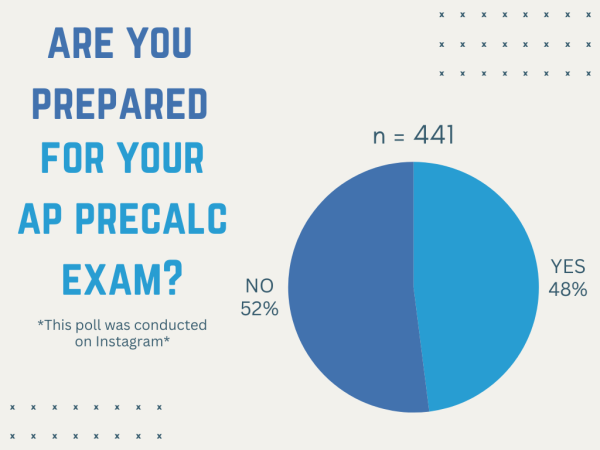
Uncalculated uncertainties

National Honor Society welcomes new inductees

The road from Rhode Island
Humans of Bellaire

From China to Bellaire, senior adjusts to changes

HUMANS OF BELLAIRE – Sarah Rimawi

HUMANS OF BELLAIRE – Helena Wang

HUMANS OF BELLAIRE – Jermy Scarpetta

HUMANS OF BELLAIRE – Emily Mao
The student news site of Bellaire High School
- Letter to the Editor
- Submit a Story Idea
- Advertising/Sponsorships
Comments (7)
Cancel reply
Your email address will not be published. Required fields are marked *
Anonymous • Nov 21, 2023 at 10:32 am
It’s not really helping me understand how much.
josh • May 9, 2023 at 9:58 am
Kassie • May 6, 2022 at 12:29 pm
Im using this for an English report. This is great because on of my sources needed to be from another student. Homework drives me insane. Im glad this is very updated too!!
Kaylee Swaim • Jan 25, 2023 at 9:21 pm
I am also using this for an English report. I have to do an argumentative essay about banning homework in schools and this helps sooo much!
Izzy McAvaney • Mar 15, 2023 at 6:43 pm
I am ALSO using this for an English report on cutting down school days, homework drives me insane!!
E. Elliott • Apr 25, 2022 at 6:42 pm
I’m from Louisiana and am actually using this for an English Essay thanks for the information it was very informative.
Nabila Wilson • Jan 10, 2022 at 6:56 pm
Interesting with the polls! I didn’t realize about 14 valedictorians, that’s crazy.
Numbers, Facts and Trends Shaping Your World
Read our research on:
Full Topic List
Regions & Countries
- Publications
- Our Methods
- Short Reads
- Tools & Resources
Read Our Research On:
Nearly one-in-five teens can’t always finish their homework because of the digital divide
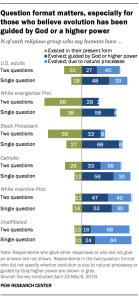
Some 15% of U.S. households with school-age children do not have a high-speed internet connection at home, according to a new Pew Research Center analysis of 2015 U.S. Census Bureau data. New survey findings from the Center also show that some teens are more likely to face digital hurdles when trying to complete their homework.
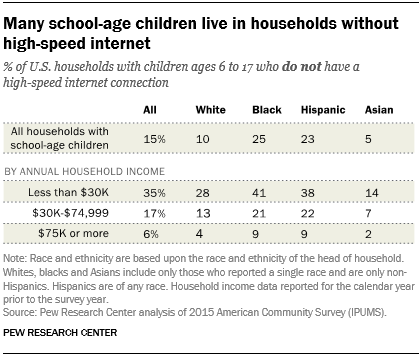
School-age children in lower-income households are especially likely to lack broadband access. Roughly one-third of households with children ages 6 to 17 and whose annual income falls below $30,000 a year do not have a high-speed internet connection at home, compared with just 6% of such households earning $75,000 or more a year. These broadband disparities are particularly pronounced for black and Hispanic households with school-age children – especially those with low household incomes. (The overall share of households with school-age children lacking a high-speed internet connection in 2015 is comparable to what the Center found in an analysis of 2013 Census data.)
This aspect of the digital divide – often referred to as the “homework gap” – can be an academic burden for teens who lack access to digital technologies at home. Black teens, as well as those from lower-income households, are especially likely to face these school-related challenges as a result, according to the new Center survey of 743 U.S. teens ages 13 to 17 conducted March 7–April 10, 2018.
At its most extreme, the homework gap can mean that teens have trouble even finishing their homework. Overall, 17% of teens say they are often or sometimes unable to complete homework assignments because they do not have reliable access to a computer or internet connection.
This is even more common among black teens. One-quarter of black teens say they are at least sometimes unable to complete their homework due to a lack of digital access, including 13% who say this happens to them often. Just 4% of white teens and 6% of Hispanic teens say this often happens to them. (There were not enough Asian respondents in this survey sample to be broken out into a separate analysis.)
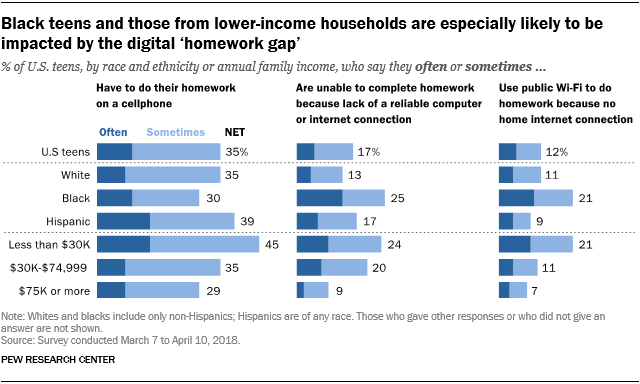
Teens also differ by income level when it comes to completing assignments: 24% of teens whose annual family income is less than $30,000 say the lack of a dependable computer or internet connection often or sometimes prohibits them from finishing their homework, but that share drops to 9% among teens who live in households earning $75,000 or more a year.
Other times, teens who lack reliable internet service at home say they seek out other locations to complete their schoolwork: 12% of teens say they at least sometimes use public Wi-Fi to complete assignments because they do not have an internet connection at home. Again, this problem is more prevalent for black or less affluent teens. Roughly one-in-five black teens (21%) report having to at least sometimes use public Wi-Fi for this reason, including 10% who say they often do so. And teens whose family income is below $30,000 a year are far more likely than those whose annual household income is $30,000 or higher to say that they do this (21% vs. 9%).
Lastly, 35% of teens say they often or sometimes have to do their homework on their cellphone. Although it is not uncommon for young people in all circumstances to complete assignments in this way, it is especially prevalent among lower-income teens. Indeed, 45% of teens who live in households earning less than $30,000 a year say they at least sometimes rely on their cellphone to finish their homework.
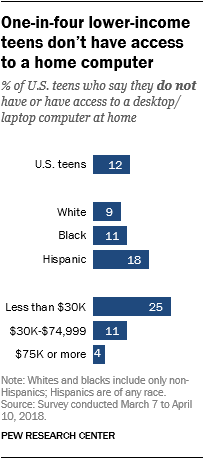
These findings reflect a broader discussion about the digital divide’s impact on America’s youth. Numerous policymakers and advocates have expressed concern that students with less access to certain technologies may fall behind their more digitally connected peers. There is some evidence that teens who have access to a home computer are more likely to graduate from high school when compared with those who don’t.
The Center’s survey of teens does show stark differences in teens’ computer access based on their household income. A quarter of teens whose family income is less than $30,000 a year do not have access to a home computer, compared with 4% of those whose annual family income is $75,000 or more.
Note: See full topline results and methodology here (PDF).
- Age & Generations
- Digital Divide
- Economic Inequality
- Education & Learning Online
- Teens & Tech
- Teens & Youth

Monica Anderson is a director of research at Pew Research Center .

Andrew Perrin is a former research analyst focusing on internet and technology at Pew Research Center .
Teens and Video Games Today
As biden and trump seek reelection, who are the oldest – and youngest – current world leaders, how teens and parents approach screen time, who are you the art and science of measuring identity, u.s. centenarian population is projected to quadruple over the next 30 years, most popular.
1615 L St. NW, Suite 800 Washington, DC 20036 USA (+1) 202-419-4300 | Main (+1) 202-857-8562 | Fax (+1) 202-419-4372 | Media Inquiries
Research Topics
- Email Newsletters
ABOUT PEW RESEARCH CENTER Pew Research Center is a nonpartisan fact tank that informs the public about the issues, attitudes and trends shaping the world. It conducts public opinion polling, demographic research, media content analysis and other empirical social science research. Pew Research Center does not take policy positions. It is a subsidiary of The Pew Charitable Trusts .
Copyright 2024 Pew Research Center
The Cult of Homework
America’s devotion to the practice stems in part from the fact that it’s what today’s parents and teachers grew up with themselves.

America has long had a fickle relationship with homework. A century or so ago, progressive reformers argued that it made kids unduly stressed , which later led in some cases to district-level bans on it for all grades under seventh. This anti-homework sentiment faded, though, amid mid-century fears that the U.S. was falling behind the Soviet Union (which led to more homework), only to resurface in the 1960s and ’70s, when a more open culture came to see homework as stifling play and creativity (which led to less). But this didn’t last either: In the ’80s, government researchers blamed America’s schools for its economic troubles and recommended ramping homework up once more.
The 21st century has so far been a homework-heavy era, with American teenagers now averaging about twice as much time spent on homework each day as their predecessors did in the 1990s . Even little kids are asked to bring school home with them. A 2015 study , for instance, found that kindergarteners, who researchers tend to agree shouldn’t have any take-home work, were spending about 25 minutes a night on it.
But not without pushback. As many children, not to mention their parents and teachers, are drained by their daily workload, some schools and districts are rethinking how homework should work—and some teachers are doing away with it entirely. They’re reviewing the research on homework (which, it should be noted, is contested) and concluding that it’s time to revisit the subject.
Read: My daughter’s homework is killing me
Hillsborough, California, an affluent suburb of San Francisco, is one district that has changed its ways. The district, which includes three elementary schools and a middle school, worked with teachers and convened panels of parents in order to come up with a homework policy that would allow students more unscheduled time to spend with their families or to play. In August 2017, it rolled out an updated policy, which emphasized that homework should be “meaningful” and banned due dates that fell on the day after a weekend or a break.
“The first year was a bit bumpy,” says Louann Carlomagno, the district’s superintendent. She says the adjustment was at times hard for the teachers, some of whom had been doing their job in a similar fashion for a quarter of a century. Parents’ expectations were also an issue. Carlomagno says they took some time to “realize that it was okay not to have an hour of homework for a second grader—that was new.”
Most of the way through year two, though, the policy appears to be working more smoothly. “The students do seem to be less stressed based on conversations I’ve had with parents,” Carlomagno says. It also helps that the students performed just as well on the state standardized test last year as they have in the past.
Earlier this year, the district of Somerville, Massachusetts, also rewrote its homework policy, reducing the amount of homework its elementary and middle schoolers may receive. In grades six through eight, for example, homework is capped at an hour a night and can only be assigned two to three nights a week.
Jack Schneider, an education professor at the University of Massachusetts at Lowell whose daughter attends school in Somerville, is generally pleased with the new policy. But, he says, it’s part of a bigger, worrisome pattern. “The origin for this was general parental dissatisfaction, which not surprisingly was coming from a particular demographic,” Schneider says. “Middle-class white parents tend to be more vocal about concerns about homework … They feel entitled enough to voice their opinions.”
Schneider is all for revisiting taken-for-granted practices like homework, but thinks districts need to take care to be inclusive in that process. “I hear approximately zero middle-class white parents talking about how homework done best in grades K through two actually strengthens the connection between home and school for young people and their families,” he says. Because many of these parents already feel connected to their school community, this benefit of homework can seem redundant. “They don’t need it,” Schneider says, “so they’re not advocating for it.”
That doesn’t mean, necessarily, that homework is more vital in low-income districts. In fact, there are different, but just as compelling, reasons it can be burdensome in these communities as well. Allison Wienhold, who teaches high-school Spanish in the small town of Dunkerton, Iowa, has phased out homework assignments over the past three years. Her thinking: Some of her students, she says, have little time for homework because they’re working 30 hours a week or responsible for looking after younger siblings.
As educators reduce or eliminate the homework they assign, it’s worth asking what amount and what kind of homework is best for students. It turns out that there’s some disagreement about this among researchers, who tend to fall in one of two camps.
In the first camp is Harris Cooper, a professor of psychology and neuroscience at Duke University. Cooper conducted a review of the existing research on homework in the mid-2000s , and found that, up to a point, the amount of homework students reported doing correlates with their performance on in-class tests. This correlation, the review found, was stronger for older students than for younger ones.
This conclusion is generally accepted among educators, in part because it’s compatible with “the 10-minute rule,” a rule of thumb popular among teachers suggesting that the proper amount of homework is approximately 10 minutes per night, per grade level—that is, 10 minutes a night for first graders, 20 minutes a night for second graders, and so on, up to two hours a night for high schoolers.
In Cooper’s eyes, homework isn’t overly burdensome for the typical American kid. He points to a 2014 Brookings Institution report that found “little evidence that the homework load has increased for the average student”; onerous amounts of homework, it determined, are indeed out there, but relatively rare. Moreover, the report noted that most parents think their children get the right amount of homework, and that parents who are worried about under-assigning outnumber those who are worried about over-assigning. Cooper says that those latter worries tend to come from a small number of communities with “concerns about being competitive for the most selective colleges and universities.”
According to Alfie Kohn, squarely in camp two, most of the conclusions listed in the previous three paragraphs are questionable. Kohn, the author of The Homework Myth: Why Our Kids Get Too Much of a Bad Thing , considers homework to be a “reliable extinguisher of curiosity,” and has several complaints with the evidence that Cooper and others cite in favor of it. Kohn notes, among other things, that Cooper’s 2006 meta-analysis doesn’t establish causation, and that its central correlation is based on children’s (potentially unreliable) self-reporting of how much time they spend doing homework. (Kohn’s prolific writing on the subject alleges numerous other methodological faults.)
In fact, other correlations make a compelling case that homework doesn’t help. Some countries whose students regularly outperform American kids on standardized tests, such as Japan and Denmark, send their kids home with less schoolwork , while students from some countries with higher homework loads than the U.S., such as Thailand and Greece, fare worse on tests. (Of course, international comparisons can be fraught because so many factors, in education systems and in societies at large, might shape students’ success.)
Kohn also takes issue with the way achievement is commonly assessed. “If all you want is to cram kids’ heads with facts for tomorrow’s tests that they’re going to forget by next week, yeah, if you give them more time and make them do the cramming at night, that could raise the scores,” he says. “But if you’re interested in kids who know how to think or enjoy learning, then homework isn’t merely ineffective, but counterproductive.”
His concern is, in a way, a philosophical one. “The practice of homework assumes that only academic growth matters, to the point that having kids work on that most of the school day isn’t enough,” Kohn says. What about homework’s effect on quality time spent with family? On long-term information retention? On critical-thinking skills? On social development? On success later in life? On happiness? The research is quiet on these questions.
Another problem is that research tends to focus on homework’s quantity rather than its quality, because the former is much easier to measure than the latter. While experts generally agree that the substance of an assignment matters greatly (and that a lot of homework is uninspiring busywork), there isn’t a catchall rule for what’s best—the answer is often specific to a certain curriculum or even an individual student.
Given that homework’s benefits are so narrowly defined (and even then, contested), it’s a bit surprising that assigning so much of it is often a classroom default, and that more isn’t done to make the homework that is assigned more enriching. A number of things are preserving this state of affairs—things that have little to do with whether homework helps students learn.
Jack Schneider, the Massachusetts parent and professor, thinks it’s important to consider the generational inertia of the practice. “The vast majority of parents of public-school students themselves are graduates of the public education system,” he says. “Therefore, their views of what is legitimate have been shaped already by the system that they would ostensibly be critiquing.” In other words, many parents’ own history with homework might lead them to expect the same for their children, and anything less is often taken as an indicator that a school or a teacher isn’t rigorous enough. (This dovetails with—and complicates—the finding that most parents think their children have the right amount of homework.)
Barbara Stengel, an education professor at Vanderbilt University’s Peabody College, brought up two developments in the educational system that might be keeping homework rote and unexciting. The first is the importance placed in the past few decades on standardized testing, which looms over many public-school classroom decisions and frequently discourages teachers from trying out more creative homework assignments. “They could do it, but they’re afraid to do it, because they’re getting pressure every day about test scores,” Stengel says.
Second, she notes that the profession of teaching, with its relatively low wages and lack of autonomy, struggles to attract and support some of the people who might reimagine homework, as well as other aspects of education. “Part of why we get less interesting homework is because some of the people who would really have pushed the limits of that are no longer in teaching,” she says.
“In general, we have no imagination when it comes to homework,” Stengel says. She wishes teachers had the time and resources to remake homework into something that actually engages students. “If we had kids reading—anything, the sports page, anything that they’re able to read—that’s the best single thing. If we had kids going to the zoo, if we had kids going to parks after school, if we had them doing all of those things, their test scores would improve. But they’re not. They’re going home and doing homework that is not expanding what they think about.”
“Exploratory” is one word Mike Simpson used when describing the types of homework he’d like his students to undertake. Simpson is the head of the Stone Independent School, a tiny private high school in Lancaster, Pennsylvania, that opened in 2017. “We were lucky to start a school a year and a half ago,” Simpson says, “so it’s been easy to say we aren’t going to assign worksheets, we aren’t going assign regurgitative problem sets.” For instance, a half-dozen students recently built a 25-foot trebuchet on campus.
Simpson says he thinks it’s a shame that the things students have to do at home are often the least fulfilling parts of schooling: “When our students can’t make the connection between the work they’re doing at 11 o’clock at night on a Tuesday to the way they want their lives to be, I think we begin to lose the plot.”
When I talked with other teachers who did homework makeovers in their classrooms, I heard few regrets. Brandy Young, a second-grade teacher in Joshua, Texas, stopped assigning take-home packets of worksheets three years ago, and instead started asking her students to do 20 minutes of pleasure reading a night. She says she’s pleased with the results, but she’s noticed something funny. “Some kids,” she says, “really do like homework.” She’s started putting out a bucket of it for students to draw from voluntarily—whether because they want an additional challenge or something to pass the time at home.
Chris Bronke, a high-school English teacher in the Chicago suburb of Downers Grove, told me something similar. This school year, he eliminated homework for his class of freshmen, and now mostly lets students study on their own or in small groups during class time. It’s usually up to them what they work on each day, and Bronke has been impressed by how they’ve managed their time.
In fact, some of them willingly spend time on assignments at home, whether because they’re particularly engaged, because they prefer to do some deeper thinking outside school, or because they needed to spend time in class that day preparing for, say, a biology test the following period. “They’re making meaningful decisions about their time that I don’t think education really ever gives students the experience, nor the practice, of doing,” Bronke said.
The typical prescription offered by those overwhelmed with homework is to assign less of it—to subtract. But perhaps a more useful approach, for many classrooms, would be to create homework only when teachers and students believe it’s actually needed to further the learning that takes place in class—to start with nothing, and add as necessary.
- Open access
- Published: 16 May 2024
Procrastination, depression and anxiety symptoms in university students: a three-wave longitudinal study on the mediating role of perceived stress
- Anna Jochmann 1 ,
- Burkhard Gusy 1 ,
- Tino Lesener 1 &
- Christine Wolter 1
BMC Psychology volume 12 , Article number: 276 ( 2024 ) Cite this article
563 Accesses
Metrics details
It is generally assumed that procrastination leads to negative consequences. However, evidence for negative consequences of procrastination is still limited and it is also unclear by which mechanisms they are mediated. Therefore, the aim of our study was to examine the harmful consequences of procrastination on students’ stress and mental health. We selected the procrastination-health model as our theoretical foundation and tried to evaluate the model’s assumption that trait procrastination leads to (chronic) disease via (chronic) stress in a temporal perspective. We chose depression and anxiety symptoms as indicators for (chronic) disease and hypothesized that procrastination leads to perceived stress over time, that perceived stress leads to depression and anxiety symptoms over time, and that procrastination leads to depression and anxiety symptoms over time, mediated by perceived stress.
To examine these relationships properly, we collected longitudinal data from 392 university students at three occasions over a one-year period and analyzed the data using autoregressive time-lagged panel models.
Procrastination did lead to depression and anxiety symptoms over time. However, perceived stress was not a mediator of this effect. Procrastination did not lead to perceived stress over time, nor did perceived stress lead to depression and anxiety symptoms over time.
Conclusions
We could not confirm that trait procrastination leads to (chronic) disease via (chronic) stress, as assumed in the procrastination-health model. Nonetheless, our study demonstrated that procrastination can have a detrimental effect on mental health. Further health outcomes and possible mediators should be explored in future studies.
Peer Review reports
Introduction
“Due tomorrow? Do tomorrow.”, might be said by someone who has a tendency to postpone tasks until the last minute. But can we enjoy today knowing about the unfinished task and tomorrow’s deadline? Or do we feel guilty for postponing a task yet again? Do we get stressed out because we have little time left to complete it? Almost everyone has procrastinated at some point when it came to completing unpleasant tasks, such as mowing the lawn, doing the taxes, or preparing for exams. Some tend to procrastinate more frequently and in all areas of life, while others are less inclined to do so. Procrastination is common across a wide range of nationalities, as well as socioeconomic and educational backgrounds [ 1 ]. Over the last fifteen years, there has been a massive increase in research on procrastination [ 2 ]. Oftentimes, research focuses on better understanding the phenomenon of procrastination and finding out why someone procrastinates in order to be able to intervene. Similarly, the internet is filled with self-help guides that promise a way to overcome procrastination. But why do people seek help for their procrastination? Until now, not much research has been conducted on the negative consequences procrastination could have on health and well-being. Therefore, in the following article we examine the effect of procrastination on mental health over time and stress as a possible facilitator of this relationship on the basis of the procrastination-health model by Sirois et al. [ 3 ].
Procrastination and its negative consequences
Procrastination can be defined as the tendency to voluntarily and irrationally delay intended activities despite expecting negative consequences as a result of the delay [ 4 , 5 ]. It has been observed in a variety of groups across the lifespan, such as students, teachers, and workers [ 1 ]. For example, some students tend to regularly delay preparing for exams and writing essays until the last minute, even if this results in time pressure or lower grades. Procrastination must be distinguished from strategic delay [ 4 , 6 ]. Delaying a task is considered strategic when other tasks are more important or when more resources are needed before the task can be completed. While strategic delay is viewed as functional and adaptive, procrastination is classified as dysfunctional. Procrastination is predominantly viewed as the result of a self-regulatory failure [ 7 ]. It can be understood as a trait, that is, as a cross-situational and time-stable behavioral disposition [ 8 ]. Thus, it is assumed that procrastinators chronically delay tasks that they experience as unpleasant or difficult [ 9 ]. Approximately 20 to 30% of adults have been found to procrastinate chronically [ 10 , 11 , 12 ]. Prevalence estimates for students are similar [ 13 ]. It is believed that students do not procrastinate more often than other groups. However, it is easy to examine procrastination in students because working on study tasks requires a high degree of self-organization and time management [ 14 ].
It is generally assumed that procrastination leads to negative consequences [ 4 ]. Negative consequences are even part of the definition of procrastination. Research indicates that procrastination is linked to lower academic performance [ 15 ], health impairment (e.g., stress [ 16 ], physical symptoms [ 17 ], depression and anxiety symptoms [ 18 ]), and poor health-related behavior (e.g., heavier alcohol consumption [ 19 ]). However, most studies targeting consequences of procrastination are cross-sectional [ 4 ]. For that reason, it often remains unclear whether an examined outcome is a consequence or an antecedent of procrastination, or whether a reciprocal relationship between procrastination and the examined outcome can be assumed. Additionally, regarding negative consequences of procrastination on health, it is still largely unknown by which mechanisms they are mediated. Uncovering such mediators would be helpful in developing interventions that can prevent negative health consequences of procrastination.
The procrastination-health model
The first and only model that exclusively focuses on the effect of procrastination on health and the mediators of this effect is the procrastination-health model [ 3 , 9 , 17 ]. Sirois [ 9 ] postulates three pathways: An immediate effect of trait procrastination on (chronic) disease and two mediated pathways (see Fig. 1 ).
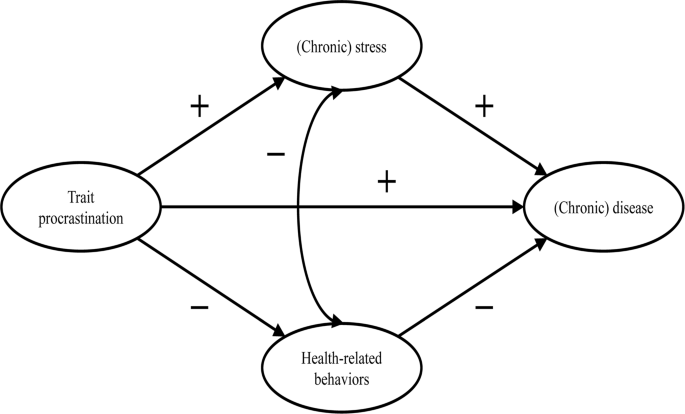
Adopted from the procrastination-health model by Sirois [ 9 ]
The immediate effect is not further explained. Research suggests that procrastination creates negative feelings, such as shame, guilt, regret, and anger [ 20 , 21 , 22 ]. The described feelings could have a detrimental effect on mental health [ 23 , 24 , 25 ].
The first mediated pathway leads from trait procrastination to (chronic) disease via (chronic) stress. Sirois [ 9 ] assumes that procrastination creates stress because procrastinators are constantly aware of the fact that they still have many tasks to complete. Stress activates the hypothalamic-pituitary-adrenocortical (HPA) system, increases autonomic nervous system arousal, and weakens the immune system, which in turn contributes to the development of diseases. Sirois [ 9 ] distinguishes between short-term and long-term effects of procrastination on health mediated by stress. She believes that, in the short term, single incidents of procrastination cause acute stress, which leads to acute health problems, such as infections or headaches. In the long term, chronic procrastination, as you would expect with trait procrastination, causes chronic stress, which leads to chronic diseases over time. There is some evidence in support of the stress-related pathway, particularly regarding short-term effects [ 3 , 17 , 26 , 27 , 28 ]. However, as we mentioned above, most of these studies are cross-sectional. Therefore, the causal direction of these effects remains unclear. To our knowledge, long-term effects of trait procrastination on (chronic) disease mediated by (chronic) stress have not yet been investigated.
The second mediated pathway leads from trait procrastination to (chronic) disease via poor health-related behavior. According to Sirois [ 9 ], procrastinators form lower intentions to carry out health-promoting behavior or to refrain from health-damaging behavior because they have a low self-efficacy of being able to care for their own health. In addition, they lack the far-sighted view that the effects of health-related behavior only become apparent in the long term. For the same reason, Sirois [ 9 ] believes that there are no short-term, but only long-term effects of procrastination on health mediated by poor health-related behavior. For example, an unhealthy diet leads to diabetes over time. The findings of studies examining the behavioral pathway are inconclusive [ 3 , 17 , 26 , 28 ]. Furthermore, since most of these studies are cross-sectional, they are not suitable for uncovering long-term effects of trait procrastination on (chronic) disease mediated by poor health-related behavior.
In summary, previous research on the two mediated pathways of the procrastination-health model mainly found support for the role of (chronic) stress in the relationship between trait procrastination and (chronic) disease. However, only short-term effects have been investigated so far. Moreover, longitudinal studies are needed to be able to assess the causal direction of the relationship between trait procrastination, (chronic) stress, and (chronic) disease. Consequently, our study is the first to examine long-term effects of trait procrastination on (chronic) disease mediated by (chronic) stress, using a longitudinal design. (Chronic) disease could be measured by a variety of different indicators (e.g., physical symptoms, diabetes, or coronary heart disease). We choose depression and anxiety symptoms as indicators for (chronic) disease because they signal mental health complaints before they manifest as (chronic) diseases. Additionally, depression and anxiety symptoms are two of the most common mental health complaints among students [ 29 , 30 ] and procrastination has been shown to be a significant predictor of depression and anxiety symptoms [ 18 , 31 , 32 , 33 , 34 ]. Until now, the stress-related pathway of the procrastination-health model with depression and anxiety symptoms as the health outcome has only been analyzed in one cross-sectional study that confirmed the predictions of the model [ 35 ].
The aim of our study is to evaluate some of the key assumptions of the procrastination-health model, particularly the relationships between trait procrastination, (chronic) stress, and (chronic) disease over time, surveyed in the following analysis using depression and anxiety symptoms.
In line with the key assumptions of the procrastination-health model, we postulate (see Fig. 2 ):
Procrastination leads to perceived stress over time.
Perceived stress leads to depression and anxiety symptoms over time.
Procrastination leads to depression and anxiety symptoms over time, mediated by perceived stress.
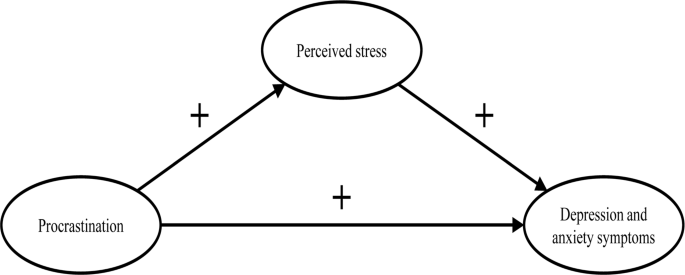
The section of the procrastination-health model we examined
Materials and methods
Our study was part of a health monitoring at a large German university Footnote 1 . Ethical approval for our study was granted by the Ethics Committee of the university’s Department of Education and Psychology. We collected the initial data in 2019. Two occasions followed, each at an interval of six months. In January 2019, we sent out 33,267 invitations to student e-mail addresses. Before beginning the survey, students provided their written informed consent to participate in our study. 3,420 students took part at the first occasion (T1; 10% response rate). Of these, 862 participated at the second (T2) and 392 at the third occasion (T3). In order to test whether dropout was selective, we compared sociodemographic and study specific characteristics (age, gender, academic semester, number of assessments/exams) as well as behavior and health-related variables (procrastination, perceived stress, depression and anxiety symptoms) between the participants of the first wave ( n = 3,420) and those who participated three times ( n = 392). Results from independent-samples t-tests and chi-square analysis showed no significant differences regarding sociodemographic and study specific characteristics (see Additional file 1: Table S1 and S2 ). Regarding behavior and health-related variables, independent-samples t-tests revealed a significant difference in procrastination between the two groups ( t (3,409) = 2.08, p < .05). The mean score of procrastination was lower in the group that participated in all three waves.
The mean age of the longitudinal respondents was 24.1 years ( SD = 5.5 years), the youngest participants were 17 years old, the oldest one was 59 years old. The majority of participants was female (74.0%), 7 participants identified neither as male nor as female (1.8%). The respondents were on average enrolled in the third year of studying ( M = 3.9; SD = 2.3). On average, the students worked about 31.2 h ( SD = 14.1) per week for their studies, and an additional 8.5 h ( SD = 8.5) for their (part-time) jobs. The average income was €851 ( SD = 406), and 4.9% of the students had at least one child. The students were mostly enrolled in philosophy and humanities (16.5%), education and psychology (15.8%), biology, chemistry, and pharmacy (12.5%), political and social sciences (10.6%), veterinary medicine (8.9%), and mathematics and computer science (7.7%).
We only used established and well evaluated instruments for our analyses.
- Procrastination
We adopted the short form of the Procrastination Questionnaire for Students (PFS-4) [ 36 ] to measure procrastination. The PFS-4 assesses procrastination at university as a largely stable behavioral disposition across situations, that is, as a trait. The questionnaire consists of four items (e.g., I put off starting tasks until the last moment.). Each item was rated on a 5-point scale ((almost) never = 1 to (almost) always = 5) for the last two weeks. All items were averaged, with higher scores indicating a greater tendency to procrastinate. The PFS-4 has been proven to be reliable and valid, showing very high correlations with other established trait procrastination scales, for example, with the German short form of the General Procrastination Scale [ 37 , 38 ]. We also proved the scale to be one-dimensional in a factor analysis, with a Cronbach’s alpha of 0.90.
Perceived stress
The Heidelberger Stress Index (HEI-STRESS) [ 39 ] is a three-item measure of current perceived stress due to studying as well as in life in general. For the first item, respondents enter a number between 0 (not stressed at all) and 100 (completely stressed) to indicate how stressed their studies have made them feel over the last four weeks. For the second and third item, respondents rate on a 5-point scale how often they feel “stressed and tense” and as how stressful they would describe their life at the moment. We transformed the second and third item to match the range of the first item before we averaged all items into a single score with higher values indicating greater perceived stress. We proved the scale to be one-dimensional and Cronbach’s alpha for our study was 0.86.
Depression and anxiety symptoms
We used the Patient Health Questionnaire-4 (PHQ-4) [ 40 ], a short form of the Patient Health Questionnaire [ 41 ] with four items, to measure depression and anxiety symptoms. The PHQ-4 contains two items from the Patient Health Questionnaire-2 (PHQ-2) [ 42 ] and the Generalized Anxiety Disorder Scale-2 (GAD-2) [ 43 ], respectively. It is a well-established screening scale designed to assess the core criteria of major depressive disorder (PHQ-2) and generalized anxiety disorder (GAD-2) according to the Diagnostic and Statistical Manual of Mental Disorders, Fifth Edition (DSM-5). However, it was shown that the GAD-2 is also appropriate for screening other anxiety disorders. According to Kroenke et al. [ 40 ], the PHQ-4 can be used to assess a person’s symptom burden and impairment. We asked the participants to rate how often they have been bothered over the last two weeks by problems, such as “Little interest or pleasure in doing things”. Response options were 0 = not at all, 1 = several days, 2 = more than half the days, and 3 = nearly every day. Calculated as the sum of the four items, the total scores range from 0 to 12 with higher scores indicating more frequent depression and anxiety symptoms. The total scores can be categorized as none-to-minimal (0–2), mild (3–5), moderate (6–8), and severe (9–12) depression and anxiety symptoms. The PHQ-4 was shown to be reliable and valid [ 40 , 44 , 45 ]. We also proved the scale to be one-dimensional in a factor analysis, with a Cronbach’s alpha of 0.86.
Data analysis
To test our hypotheses, we performed structural equation modelling (SEM) using R (Version 4.1.1) with the package lavaan. All items were standardized ( M = 0, SD = 1). Due to the non-normality of some study variables and a sufficiently large sample size of N near to 400 [ 46 ], we used robust maximum likelihood estimation (MLR) for all model estimations. As recommended by Hu and Bentler [ 47 ], we assessed the models’ goodness of fit by chi-square test statistic, root mean square error of approximation (RMSEA), standardized root mean square residual (SRMR), Tucker-Lewis index (TLI), and comparative fit index (CFI). A non-significant chi-square indicates good model fit. Since chi-square is sensitive to sample size, we also evaluated fit indices less sensitive to the number of observations. RMSEA and SRMR values of 0.05 or lower as well as TLI and CFI values of 0.97 or higher indicate good model fit. RMSEA values of 0.08 or lower, SRMR values of 0.10 or lower, as well as TLI and CFI values of 0.95 or higher indicate acceptable model fit [ 48 , 49 ]. First, we conducted confirmatory factor analysis for the first occasion, defining three factors that correspond to the measures of procrastination, perceived stress, and depression and anxiety symptoms. Next, we tested for measurements invariance over time and specified the measurement model, before testing our hypotheses.
Measurement invariance over time
To test for measurement invariance over time, we defined one latent variable for each of the three occasions, corresponding to the measures of procrastination, perceived stress, and depression and anxiety symptoms, respectively. As recommended by Geiser and colleagues [ 50 ], the links between indicators and factors (i.e., factor loadings and intercepts) should be equal over measurement occasions; therefore, we added indicator specific factors. A first and least stringent step of testing measurement invariance is configural invariance (M CI ). It was examined whether the included constructs (procrastination, perceived stress, depression and anxiety symptoms) have the same pattern of free and fixed loadings over time. This means that the assignment of the indicators to the three latent factors over time is supported by the underlying data. If configural invariance was supported, restrictions for the next step of testing measurement invariance (metric or weak invariance; M MI ) were added. This means that each item contributes to the latent construct to a similar degree over time. Metric invariance was tested by constraining the factor loadings of the constructs over time. The next step of testing measurement invariance (scalar or strong invariance; M SI ) consisted of checking whether mean differences in the latent construct capture all mean differences in the shared variance of the items. Scalar invariance was tested by constraining the item intercepts over time. The constraints applied in the metric invariance model were retained [ 51 ]. For the last step of testing measurement invariance (residual or strict invariance; M RI ), the residual variables were also set equal over time. If residual invariance is supported, differences in the observed variables can exclusively be attributed to differences in the variances of the latent variables.
We used the Satorra-Bentler chi-square difference test to evaluate the superiority of a more stringent model [ 52 ]. We assumed the model with the largest number of invariance restrictions – which still has an acceptable fit and no substantial deterioration of the chi-square value – to be the final model [ 53 ]. Following previous recommendations, we considered a decrease in CFI of 0.01 and an increase in RMSEA of 0.015 as unacceptable to establish measurement invariance [ 54 ]. If a more stringent model had a significant worse chi-square value, but the model fit was still acceptable and the deterioration in model fit fell within the change criteria recommended for CFI and RMSEA values, we still considered the more stringent model to be superior.
Hypotheses testing
As recommended by Dormann et al. [ 55 ], we applied autoregressive time-lagged panel models to test our hypotheses. In the first step, we specified a model (M 0 ) that only included the stabilities of the three variables (procrastination, perceived stress, depression and anxiety symptoms) over time. In the next step (M 1 ), we added the time-lagged effects from procrastination (T1) to perceived stress (T2) and from procrastination (T2) to perceived stress (T3) as well as from perceived stress (T1) to depression and anxiety symptoms (T2) and from perceived stress (T2) to depression and anxiety symptoms (T3). Additionally, we included a direct path from procrastination (T1) to depression and anxiety symptoms (T3). If this path becomes significant, we can assume a partial mediation [ 55 ]. Otherwise, we can assume a full mediation. We compared these nested models using the Satorra-Bentler chi-square difference test and the Akaike information criterion (AIC). The chi-square difference value should either be non-significant, indicating that the proposed model including our hypotheses (M 1 ) does not have a significant worse model fit than the model including only stabilities (M 0 ), or, if significant, it should be in the direction that M 1 fits the data better than M 0 . Regarding the AIC, M 1 should have a lower value than M 0 .
Table 1 displays the means, standard deviations, internal consistencies (Cronbach’s alpha), and stabilities (correlations) of all study variables. The alpha values of procrastination, perceived stress, and depression and anxiety symptoms are classified as good (> 0.80) [ 56 ]. The correlation matrix of the manifest variables used for the analyses can be found in the Additional file 1: Table S3 .
We observed the highest test-retest reliabilities for procrastination ( r ≥ .74). The test-retest reliabilities for depression and anxiety symptoms ( r ≥ .64) and for perceived stress ( r ≥ .54) were a bit lower (see Table 1 ). The pattern of correlations shows a medium to large but positive relationship between procrastination and depression and anxiety symptoms [ 57 , 58 ]. The association between procrastination and perceived stress was small, the one between perceived stress and depression and anxiety symptoms very large (see Table 1 ).
Confirmatory factor analysis showed an acceptable to good fit (x 2 (41) = 118.618, p < .001; SRMR = 0.042; RMSEA = 0.071; TLI = 0.95; CFI = 0.97). When testing for measurement invariance over time for each construct, the residual invariance models with indicator specific factors provided good fit to the data (M RI ; see Table 2 ), suggesting that differences in the observed variables can exclusively be attributed to differences of the latent variables. We then specified and tested the measurement model of the latent constructs prior to model testing based on the items of procrastination, perceived stress, and depression and anxiety symptoms. The measurement model fitted the data well (M M ; see Table 3 ). All items loaded solidly on their respective factors (0.791 ≤ β ≤ 0.987; p < .001).
To test our hypotheses, we analyzed the two models described in the methods section.
The fit of the stability model (M 0 ) was acceptable (see Table 3 ). Procrastination was stable over time, with stabilities above 0.82. The stabilities of perceived stress as well as depression and anxiety symptoms were somewhat lower, ranging from 0.559 (T1 -> T2) to 0.696 (T2 -> T3) for perceived stress and from 0.713 (T2 -> T3) to 0.770 (T1 -> T2) for depression and anxiety symptoms, respectively.
The autoregressive mediation model (M 1 ) fitted the data significantly better than M 0 . The direct path from procrastination (T1) to depression and anxiety symptoms (T3) was significant (β = 0.16; p < .001), however, none of the mediated paths (from procrastination (T1) to perceived stress (T2) and from perceived stress (T2) to depression and anxiety symptoms (T3)) proved to be substantial. Also, the time-lagged paths from perceived stress (T1) to depression and anxiety symptoms (T2) and from procrastination (T2) to perceived stress (T3) were not substantial either (see Fig. 3 ).
To examine whether the hypothesized effects would occur over a one-year period rather than a six-months period, we specified an additional model with paths from procrastination (T1) to perceived stress (T3) and from perceived stress (T1) to depression and anxiety symptoms (T3), also including the stabilities of the three constructs as in the stability model M 0 . The model showed an acceptable fit (χ 2 (486) = 831.281, p < .001; RMSEA = 0.048; SRMR = 0.091; TLI = 0.95; CFI = 0.95), but neither of the two paths were significant.
Therefore, our hypotheses, that procrastination leads to perceived stress over time (H1) and that perceived stress leads to depression and anxiety symptoms over time (H2) must be rejected. We could only partially confirm our third hypothesis, that procrastination leads to depression and anxiety over time, mediated by perceived stress (H3), since procrastination did lead to depression and anxiety symptoms over time. However, this effect was not mediated by perceived stress.
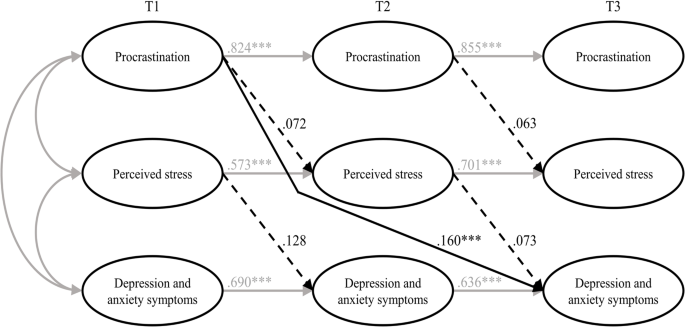
Results of the estimated model including all hypotheses (M 1 ). Note Non-significant paths are dotted. T1 = time 1; T2 = time 2; T3 = time 3. *** p < .001
To sum up, we tried to examine the harmful consequences of procrastination on students’ stress and mental health. Hence, we selected the procrastination-health model by Sirois [ 9 ] as a theoretical foundation and tried to evaluate some of its key assumptions in a temporal perspective. The author assumes that trait procrastination leads to (chronic) disease via (chronic) stress. We chose depression and anxiety symptoms as indicators for (chronic) disease and postulated, in line with the key assumptions of the procrastination-health model, that procrastination leads to perceived stress over time (H1), that perceived stress leads to depression and anxiety symptoms over time (H2), and that procrastination leads to depression and anxiety symptoms over time, mediated by perceived stress (H3). To examine these relationships properly, we collected longitudinal data from students at three occasions over a one-year period and analyzed the data using autoregressive time-lagged panel models. Our first and second hypotheses had to be rejected: Procrastination did not lead to perceived stress over time, and perceived stress did not lead to depression and anxiety symptoms over time. However, procrastination did lead to depression and anxiety symptoms over time – which is in line with our third hypothesis – but perceived stress was not a mediator of this effect. Therefore, we could only partially confirm our third hypothesis.
Our results contradict previous studies on the stress-related pathway of the procrastination-health model, which consistently found support for the role of (chronic) stress in the relationship between trait procrastination and (chronic) disease. Since most of these studies were cross-sectional, though, the causal direction of these effects remained uncertain. There are two longitudinal studies that confirm the stress-related pathway of the procrastination-health model [ 27 , 28 ], but both studies examined short-term effects (≤ 3 months), whereas we focused on more long-term effects. Therefore, the divergent findings may indicate that there are short-term, but no long-term effects of trait procrastination on (chronic) disease mediated by (chronic) stress.
Our results especially raise the question whether trait procrastination leads to (chronic) stress in the long term. Looking at previous longitudinal studies on the effect of procrastination on stress, the following stands out: At shorter study periods of two weeks [ 27 ] and four weeks [ 28 ], the effect of procrastination on stress appears to be present. At longer study periods of seven weeks [ 59 ], three months [ 28 ], six months, and twelve months, as in our study, the effect of procrastination on stress does not appear to be present. There is one longitudinal study in which procrastination was a significant predictor of stress symptoms nine months later [ 34 ]. The results of this study should be interpreted with caution, though, because the outbreak of the COVID-19 pandemic fell within the study period, which could have contributed to increased stress symptoms [ 60 ]. Unfortunately, Johansson et al. [ 34 ] did not report whether average stress symptoms increased during their study. In one of the two studies conducted by Fincham and May [ 59 ], the COVID-19 pandemic outbreak also fell within their seven-week study period. However, they reported that in their study, average stress symptoms did not increase from baseline to follow-up. Taken together, the findings suggest that procrastination can cause acute stress in the short term, for example during times when many tasks need to be completed, such as at the end of a semester, but that procrastination does not lead to chronic stress over time. It seems possible that students are able to recover during the semester from the stress their procrastination caused at the end of the previous semester. Because of their procrastination, they may also have more time to engage in relaxing activities, which could further mitigate the effect of procrastination on stress. Our conclusions are supported by an early and well-known longitudinal study by Tice and Baumeister [ 61 ], which compared procrastinating and non-procrastinating students with regard to their health. They found that procrastinators experienced less stress than their non-procrastinating peers at the beginning of the semester, but more at the end of the semester. Additionally, our conclusions are in line with an interview study in which university students were asked about the consequences of their procrastination [ 62 ]. The students reported that, due to their procrastination, they experience high levels of stress during periods with heavy workloads (e.g., before deadlines or exams). However, the stress does not last, instead, it is relieved immediately after these periods.
Even though research indicates, in line with the assumptions of the procrastination-health model, that stress is a risk factor for physical and mental disorders [ 63 , 64 , 65 , 66 ], perceived stress did not have a significant effect on depression and anxiety symptoms in our study. The relationship between stress and mental health is complex, as people respond to stress in many different ways. While some develop stress-related mental disorders, others experience mild psychological symptoms or no symptoms at all [ 67 ]. This can be explained with the help of vulnerability-stress models. According to vulnerability-stress models, mental illnesses emerge from an interaction of vulnerabilities (e.g., genetic factors, difficult family backgrounds, or weak coping abilities) and stress (e.g., minor or major life events or daily hassles) [ 68 , 69 ]. The stress perceived by the students in our sample may not be sufficient enough on its own, without the presence of other risk factors, to cause depression and anxiety symptoms. However, since we did not assess individual vulnerability and stress factors in our study, these considerations are mere speculation.
In our study, procrastination led to depression and anxiety symptoms over time, which is consistent with the procrastination-health model as well as previous cross-sectional and longitudinal evidence [ 18 , 21 , 31 , 32 , 33 , 34 ]. However, it is still unclear by which mechanisms this effect is mediated, as perceived stress did not prove to be a substantial mediator in our study. One possible mechanism would be that procrastination impairs affective well-being [ 70 ] and creates negative feelings, such as shame, guilt, regret, and anger [ 20 , 21 , 22 , 62 , 71 ], which in turn could lead to depression and anxiety symptoms [ 23 , 24 , 25 ]. Other potential mediators of the relationship between procrastination and depression and anxiety symptoms emerge from the behavioral pathway of the procrastination-health model, suggesting that poor health-related behaviors mediate the effect of trait procrastination on (chronic) disease. Although evidence for this is still scarce, the results of one cross-sectional study, for example, indicate that poor sleep quality might mediate the effect of procrastination on depression and anxiety symptoms [ 35 ].
In summary, we found that procrastination leads to depression and anxiety symptoms over time and that perceived stress is not a mediator of this effect. We could not show that procrastination leads to perceived stress over time, nor that perceived stress leads to depression and anxiety symptoms over time. For the most part, the relationships between procrastination, perceived stress, and depression and anxiety symptoms did not match the relationships between trait procrastination, (chronic) stress, and (chronic) disease as assumed in the procrastination-health model. Explanations for this could be that procrastination might only lead to perceived stress in the short term, for example, during preparations for end-of-semester exams, and that perceived stress may not be sufficient enough on its own, without the presence of other risk factors, to cause depression and anxiety symptoms. In conclusion, we could not confirm long-term effects of trait procrastination on (chronic) disease mediated by (chronic) stress, as assumed for the stress-related pathway of the procrastination-health model.
Limitations and suggestions for future research
In our study, we tried to draw causal conclusions about the harmful consequences of procrastination on students’ stress and mental health. However, since procrastination is a trait that cannot be manipulated experimentally, we have conducted an observational rather than an experimental study, which makes causal inferences more difficult. Nonetheless, a major strength of our study is that we used a longitudinal design with three waves. This made it possible to draw conclusions about the causal direction of the effects, as in hardly any other study targeting consequences of procrastination on health before [ 4 , 28 , 55 ]. Therefore, we strongly recommend using a similar longitudinal design in future studies on the procrastination-health model or on consequences of procrastination on health in general.
We chose a time lag of six months between each of the three measurement occasions to examine long-term effects of procrastination on depression and anxiety symptoms mediated by perceived stress. However, more than six months may be necessary for the hypothesized effects to occur [ 72 ]. The fact that the temporal stabilities of the examined constructs were moderate or high (0.559 ≤ β ≤ 0.854) [ 73 , 74 ] also suggests that the time lags may have been too short. The larger the time lag, the lower the temporal stabilities, as shown for depression and anxiety symptoms, for example [ 75 ]. High temporal stabilities make it more difficult to detect an effect that actually exists [ 76 ]. Nonetheless, Dormann and Griffin [ 77 ] recommend using shorter time lags of less than one year, even with high stabilities, because of other influential factors, such as unmeasured third variables. Therefore, our time lags of six months seem appropriate.
It should be discussed, though, whether it is possible to detect long-term effects of the stress-related pathway of the procrastination-health model within a total study period of one year. Sirois [ 9 ] distinguishes between short-term and long-term effects of procrastination on health mediated by stress, but does not address how long it might take for long-term effects to occur or when effects can be considered long-term instead of short-term. The fact that an effect of procrastination on stress is evident at shorter study periods of four weeks or less but in most cases not at longer study periods of seven weeks or more, as we mentioned earlier, could indicate that short-term effects occur within the time frame of one to three months, considering the entire stress-related pathway. Hence, it seems appropriate to assume that we have examined rather long-term effects, given our study period of six and twelve months. Nevertheless, it would be beneficial to use varying study periods in future studies, in order to be able to determine when effects can be considered long-term.
Concerning long-term effects of the stress-related pathway, Sirois [ 9 ] assumes that chronic procrastination causes chronic stress, which leads to chronic diseases over time. The term “chronic stress” refers to prolonged stress episodes associated with permanent tension. The instrument we used captures perceived stress over the last four weeks. Even though the perceived stress of the students in our sample was relatively stable (0.559 ≤ β ≤ 0.696), we do not know how much fluctuation occurred between each of the three occasions. However, there is some evidence suggesting that perceived stress is strongly associated with chronic stress [ 78 ]. Thus, it seems acceptable that we used perceived stress as an indicator for chronic stress in our study. For future studies, we still suggest the use of an instrument that can more accurately reflect chronic stress, for example, the Trier Inventory for Chronic Stress (TICS) [ 79 ].
It is also possible that the occasions were inconveniently chosen, as they all took place in a critical academic period near the end of the semester, just before the examination period began. We chose a similar period in the semester for each occasion for the sake of comparability. However, it is possible that, during this preparation periods, stress levels peaked and procrastinators procrastinated less because they had to catch up after delaying their work. This could have introduced bias to the data. Therefore, in future studies, investigation periods should be chosen that are closer to the beginning or in the middle of a semester.
Furthermore, Sirois [ 9 ] did not really explain her understanding of “chronic disease”. However, it seems clear that physical illnesses, such as diabetes or cardiovascular diseases, are meant. Depression and anxiety symptoms, which we chose as indicators for chronic disease, represent mental health complaints that do not have to be at the level of a major depressive disorder or an anxiety disorder, in terms of their quantity, intensity, or duration [ 40 ]. But they can be viewed as precursors to a major depressive disorder or an anxiety disorder. Therefore, given our study period of one year, it seems appropriate to use depression and anxiety symptoms as indicators for chronic disease. At longer study periods, we would expect these mental health complaints to manifest as mental disorders. Moreover, the procrastination-health model was originally designed to be applied to physical diseases [ 3 ]. Perhaps, the model assumptions are more applicable to physical diseases than to mental disorders. By applying parts of the model to mental health complaints, we have taken an important step towards finding out whether the model is applicable to mental disorders as well. Future studies should examine additional long-term health outcomes, both physical and psychological. This would help to determine whether trait procrastination has varying effects on different diseases over time. Furthermore, we suggest including individual vulnerability and stress factors in future studies in order to be able to analyze the effect of (chronic) stress on (chronic) diseases in a more differentiated way.
Regarding our sample, 3,420 students took part at the first occasion, but only 392 participated three times, which results in a dropout rate of 88.5%. At the second and third occasion, invitation e-mails were only sent to participants who had indicated at the previous occasion that they would be willing to participate in a repeat survey and provided their e-mail address. This is probably one of the main reasons for our high dropout rate. Other reasons could be that the students did not receive any incentives for participating in our study and that some may have graduated between the occasions. Selective dropout analysis revealed that the mean score of procrastination was lower in the group that participated in all three waves ( n = 392) compared to the group that participated in the first wave ( n = 3,420). One reason for this could be that those who have a higher tendency to procrastinate were more likely to procrastinate on filling out our survey at the second and third occasion. The findings of our dropout analysis should be kept in mind when interpreting our results, as lower levels of procrastination may have eliminated an effect on perceived stress or on depression and anxiety symptoms. Additionally, across all age groups in population-representative samples, the student age group reports having the best subjective health [ 80 ]. Therefore, it is possible that they are more resilient to stress and experience less impairment of well-being than other age groups. Hence, we recommend that future studies focus on other age groups as well.
It is generally assumed that procrastination leads to lower academic performance, health impairment, and poor health-related behavior. However, evidence for negative consequences of procrastination is still limited and it is also unclear by which mechanisms they are mediated. In consequence, the aim of our study was to examine the effect of procrastination on mental health over time and stress as a possible facilitator of this relationship. We selected the procrastination-health model as a theoretical foundation and used the stress-related pathway of the model, assuming that trait procrastination leads to (chronic) disease via (chronic) stress. We chose depression and anxiety symptoms as indicators for (chronic) disease and collected longitudinal data from students at three occasions over a one-year period. This allowed us to draw conclusions about the causal direction of the effects, as in hardly any other study examining consequences of procrastination on (mental) health before. Our results indicate that procrastination leads to depression and anxiety symptoms over time and that perceived stress is not a mediator of this effect. We could not show that procrastination leads to perceived stress over time, nor that perceived stress leads to depression and anxiety symptoms over time. Explanations for this could be that procrastination might only lead to perceived stress in the short term, for example, during preparations for end-of-semester exams, and that perceived stress may not be sufficient on its own, that is, without the presence of other risk factors, to cause depression and anxiety symptoms. Overall, we could not confirm long-term effects of trait procrastination on (chronic) disease mediated by (chronic) stress, as assumed for the stress-related pathway of the procrastination-health model. Our study emphasizes the importance of identifying the consequences procrastination can have on health and well-being and determining by which mechanisms they are mediated. Only then will it be possible to develop interventions that can prevent negative health consequences of procrastination. Further health outcomes and possible mediators should be explored in future studies, using a similar longitudinal design.
Data availability
The datasets used and/or analysed during the current study are available from the corresponding author on reasonable request.
University Health Report at Freie Universität Berlin.
Abbreviations
Comparative fit index
Diagnostic and Statistical Manual of Mental Disorders, Fifth Edition
Generalized Anxiety Disorder Scale-2
Heidelberger Stress Index
Hypothalamic-pituitary-adrenocortical
Robust maximum likelihood estimation
Short form of the Procrastination Questionnaire for Students
Patient Health Questionnaire-2
Patient Health Questionnaire-4
Root mean square error of approximation
Structural equation modeling
Standardized root mean square residual
Tucker-Lewis index
Lu D, He Y, Tan Y, Gender S, Status. Cultural differences, Education, family size and procrastination: a sociodemographic Meta-analysis. Front Psychol. 2021. https://doi.org/10.3389/fpsyg.2021.719425 .
Article PubMed PubMed Central Google Scholar
Yan B, Zhang X. What research has been conducted on Procrastination? Evidence from a systematical bibliometric analysis. Front Psychol. 2022. https://doi.org/10.3389/fpsyg.2022.809044 .
Sirois FM, Melia-Gordon ML, Pychyl TA. I’ll look after my health, later: an investigation of procrastination and health. Pers Individ Dif. 2003;35:1167–84. https://doi.org/10.1016/S0191-8869(02)00326-4 .
Article Google Scholar
Grunschel C. Akademische Prokrastination: Eine qualitative und quantitative Untersuchung von Gründen und Konsequenzen [Unpublished doctoral dissertation]: Universität Bielefeld; 2013.
Steel P. The Nature of Procrastination: a Meta-Analytic and Theoretical Review of Quintessential Self-Regulatory failure. Psychol Bull. 2007;133:65–94. https://doi.org/10.1037/0033-2909.133.1.65 .
Article PubMed Google Scholar
Corkin DM, Yu SL, Lindt SF. Comparing active delay and procrastination from a self-regulated learning perspective. Learn Individ Differ. 2011;21:602–6. https://doi.org/10.1016/j.lindif.2011.07.005 .
Balkis M, Duru E. Procrastination, self-regulation failure, academic life satisfaction, and affective well-being: underregulation or misregulation form. Eur J Psychol Educ. 2016;31:439–59. https://doi.org/10.1007/s10212-015-0266-5 .
Schulz N. Procrastination und Planung – Eine Untersuchung zum Einfluss von Aufschiebeverhalten und Depressivität auf unterschiedliche Planungskompetenzen [Doctoral dissertation]: Westfälische Wilhelms-Universität Münster; 2007.
Sirois FM. Procrastination, stress, and Chronic Health conditions: a temporal perspective. In: Sirois FM, Pychyl TA, editors. Procrastination, Health, and well-being. London: Academic; 2016. pp. 67–92. https://doi.org/10.1016/B978-0-12-802862-9.00004-9 .
Harriott J, Ferrari JR. Prevalence of procrastination among samples of adults. Psychol Rep. 1996;78:611–6. https://doi.org/10.2466/pr0.1996.78.2.611 .
Ferrari JR, O’Callaghan J, Newbegin I. Prevalence of Procrastination in the United States, United Kingdom, and Australia: Arousal and Avoidance delays among adults. N Am J Psychol. 2005;7:1–6.
Google Scholar
Ferrari JR, Díaz-Morales JF, O’Callaghan J, Díaz K, Argumedo D. Frequent behavioral Delay tendencies by adults. J Cross Cult Psychol. 2007;38:458–64. https://doi.org/10.1177/0022022107302314 .
Day V, Mensink D, O’Sullivan M. Patterns of academic procrastination. JCRL. 2000;30:120–34. https://doi.org/10.1080/10790195.2000.10850090 .
Höcker A, Engberding M, Rist F, Prokrastination. Ein Manual Zur Behandlung Des Pathologischen Aufschiebens. 2nd ed. Göttingen: Hogrefe; 2017.
Kim KR, Seo EH. The relationship between procrastination and academic performance: a meta-analysis. Pers Individ Dif. 2015;82:26–33. https://doi.org/10.1016/j.paid.2015.02.038 .
Khalid A, Zhang Q, Wang W, Ghaffari AS, Pan F. The relationship between procrastination, perceived stress, saliva alpha-amylase level and parenting styles in Chinese first year medical students. Psychol Res Behav Manag. 2019;12:489–98. https://doi.org/10.2147/PRBM.S207430 .
Sirois FM. I’ll look after my health, later: a replication and extension of the procrastination–health model with community-dwelling adults. Pers Individ Dif. 2007;43:15–26. https://doi.org/10.1016/j.paid.2006.11.003 .
Reinecke L, Meier A, Aufenanger S, Beutel ME, Dreier M, Quiring O, et al. Permanently online and permanently procrastinating? The mediating role of internet use for the effects of trait procrastination on psychological health and well-being. New Media Soc. 2018;20:862–80. https://doi.org/10.1177/1461444816675437 .
Westgate EC, Wormington SV, Oleson KC, Lindgren KP. Productive procrastination: academic procrastination style predicts academic and alcohol outcomes. J Appl Soc Psychol. 2017;47:124–35. https://doi.org/10.1111/jasp.12417 .
Feyzi Behnagh R, Ferrari JR. Exploring 40 years on affective correlates to procrastination: a literature review of situational and dispositional types. Curr Psychol. 2022;41:1097–111. https://doi.org/10.1007/s12144-021-02653-z .
Rahimi S, Hall NC, Sticca F. Understanding academic procrastination: a longitudinal analysis of procrastination and emotions in undergraduate and graduate students. Motiv Emot. 2023. https://doi.org/10.1007/s11031-023-10010-9 .
Patrzek J, Grunschel C, Fries S. Academic procrastination: the perspective of University counsellors. Int J Adv Counselling. 2012;34:185–201. https://doi.org/10.1007/s10447-012-9150-z .
Watson D, Clark LA, Carey G. Positive and negative affectivity and their relation to anxiety and depressive disorders. J Abnorm Psychol. 1988;97:346–53. https://doi.org/10.1037//0021-843x.97.3.346 .
Cândea D-M, Szentagotai-Tătar A. Shame-proneness, guilt-proneness and anxiety symptoms: a meta-analysis. J Anxiety Disord. 2018;58:78–106. https://doi.org/10.1016/j.janxdis.2018.07.005 .
Young CM, Neighbors C, DiBello AM, Traylor ZK, Tomkins M. Shame and guilt-proneness as mediators of associations between General Causality orientations and depressive symptoms. J Soc Clin Psychol. 2016;35:357–70. https://doi.org/10.1521/jscp.2016.35.5.357 .
Stead R, Shanahan MJ, Neufeld RW. I’ll go to therapy, eventually: Procrastination, stress and mental health. Pers Individ Dif. 2010;49:175–80. https://doi.org/10.1016/j.paid.2010.03.028 .
Dow NM. Procrastination, stress, and sleep in tertiary students [Master’s thesis]: University of Canterbury; 2018.
Sirois FM, Stride CB, Pychyl TA. Procrastination and health: a longitudinal test of the roles of stress and health behaviours. Br J Health Psychol. 2023. https://doi.org/10.1111/bjhp.12658 .
Hofmann F-H, Sperth M, Holm-Hadulla RM. Psychische Belastungen Und Probleme Studierender. Psychotherapeut. 2017;62:395–402. https://doi.org/10.1007/s00278-017-0224-6 .
Liu CH, Stevens C, Wong SHM, Yasui M, Chen JA. The prevalence and predictors of mental health diagnoses and suicide among U.S. college students: implications for addressing disparities in service use. Depress Anxiety. 2019;36:8–17. https://doi.org/10.1002/da.22830 .
Aftab S, Klibert J, Holtzman N, Qadeer K, Aftab S. Schemas mediate the Link between Procrastination and Depression: results from the United States and Pakistan. J Rat-Emo Cognitive-Behav Ther. 2017;35:329–45. https://doi.org/10.1007/s10942-017-0263-5 .
Flett AL, Haghbin M, Pychyl TA. Procrastination and depression from a cognitive perspective: an exploration of the associations among Procrastinatory Automatic thoughts, rumination, and Mindfulness. J Rat-Emo Cognitive-Behav Ther. 2016;34:169–86. https://doi.org/10.1007/s10942-016-0235-1 .
Saddler CD, Sacks LA. Multidimensional perfectionism and academic procrastination: relationships with Depression in University students. Psychol Rep. 1993;73:863–71. https://doi.org/10.1177/00332941930733pt123 .
Johansson F, Rozental A, Edlund K, Côté P, Sundberg T, Onell C, et al. Associations between procrastination and subsequent Health outcomes among University students in Sweden. JAMA Netw Open. 2023. https://doi.org/10.1001/jamanetworkopen.2022.49346 .
Gusy B, Jochmann A, Lesener T, Wolter C, Blaszcyk W. „Get it done – schadet Aufschieben Der Gesundheit? Präv Gesundheitsf. 2023;18:228–33. https://doi.org/10.1007/s11553-022-00950-4 .
Glöckner-Rist A, Engberding M, Höcker A, Rist F. Prokrastinationsfragebogen für Studierende (PFS): Zusammenstellung sozialwissenschaftlicher items und Skalen. ZIS - GESIS Leibniz Institute for the Social Sciences; 2014.
Klingsieck KB, Fries S. Allgemeine Prokrastination: Entwicklung Und Validierung Einer Deutschsprachigen Kurzskala Der General Procrastination Scale (Lay, 1986). Diagnostica. 2012;58:182–93. https://doi.org/10.1026/0012-1924/a000060 .
Lay CH. At last, my research article on procrastination. J Res Pers. 1986;20:474–95. https://doi.org/10.1016/0092-6566(86)90127-3 .
Schmidt LI, Obergfell J. Zwangsjacke Bachelor?! Stressempfinden Und Gesundheit Studierender: Der Einfluss Von Anforderungen Und Entscheidungsfreiräumen Bei Bachelor- Und Diplomstudierenden Nach Karaseks Demand-Control-Modell. Saarbrücken: VDM Verlag Dr. Müller; 2011.
Kroenke K, Spitzer RL, Williams JB, Löwe B. An Ultra-brief Screening Scale for anxiety and depression: the PHQ-4. Psychosomatics. 2009;50:613–21. https://doi.org/10.1016/S0033-3182(09)70864-3 .
Spitzer RL, Kroenke K, Williams JB. Validation and utility of a self-report version of PRIME-MD: the PHQ Primary Care Study. JAMA. 1999;282:1737–44. https://doi.org/10.1001/jama.282.18.1737 .
Kroenke K, Spitzer RL, Williams JB. The Patient Health Questionnaire-2: validity of a two-item Depression Screener. Med Care. 2003;41:1284–92.
Kroenke K, Spitzer RL, Williams JB, Monahan PO, Löwe B. Anxiety disorders in Primary Care: prevalence, impairment, Comorbidity, and detection. Ann Intern Med. 2007;146:317–25. https://doi.org/10.7326/0003-4819-146-5-200703060-00004 .
Khubchandani J, Brey R, Kotecki J, Kleinfelder J, Anderson J. The Psychometric properties of PHQ-4 depression and anxiety screening scale among College Students. Arch Psychiatr Nurs. 2016;30:457–62. https://doi.org/10.1016/j.apnu.2016.01.014 .
Löwe B, Wahl I, Rose M, Spitzer C, Glaesmer H, Wingenfeld K, et al. A 4-item measure of depression and anxiety: validation and standardization of the Patient Health Questionnaire-4 (PHQ-4) in the general population. J Affect Disorders. 2010;122:86–95. https://doi.org/10.1016/j.jad.2009.06.019 .
Boomsma A, Hoogland JJ. The robustness of LISREL modeling revisited. In: Cudeck R, Du Toit S, Sörbom D, editors. Structural equation modeling: Present and Future: a festschrift in honor of Karl Jöreskog. Lincolnwood: Scientific Software International; 2001. pp. 139–68.
Hu L, Bentler PM. Fit indices in Covariance structure modeling: sensitivity to Underparameterized Model Misspecification. Psychol Methods. 1998;3:424–53. https://doi.org/10.1037/1082-989X.3.4.424 .
Schermelleh-Engel K, Moosbrugger H, Müller H. Evaluating the fit of structural equation models: test of significance and descriptive goodness-of-fit measures. MPR. 2003;8:23–74.
Hu L, Bentler PM. Cutoff criteria for fit indexes in Covariance structure analysis: conventional criteria Versus New Alternatives. Struct Equ Model. 1999;6:1–55. https://doi.org/10.1080/10705519909540118 .
Geiser C, Eid M, Nussbeck FW, Courvoisier DS, Cole DA. Analyzing true change in Longitudinal Multitrait-Multimethod studies: application of a Multimethod Change Model to Depression and anxiety in children. Dev Psychol. 2010;46:29–45. https://doi.org/10.1037/a0017888 .
Putnick DL, Bornstein MH. Measurement invariance conventions and reporting: the state of the art and future directions for psychological research. Dev Rev. 2016;41:71–90. https://doi.org/10.1016/j.dr.2016.06.004 .
Satorra A, Bentler PM. A scaled difference chi-square test statistic for moment structure analysis. Psychometrika. 2001;66:507–14. https://doi.org/10.1007/BF02296192 .
Geiser C. Datenanalyse Mit Mplus: Eine Anwendungsorientierte Einführung. Wiesbaden: VS Verlag für Sozialwissenschaften; 2010.
Book Google Scholar
Chen F, Curran PJ, Bollen KA, Kirby J, Paxton P. An empirical evaluation of the use of fixed cutoff points in RMSEA Test Statistic in Structural equation models. Sociol Methods Res. 2008;36:462–94. https://doi.org/10.1177/0049124108314720 .
Dormann C, Zapf D, Perels F. Quer- und Längsschnittstudien in der Arbeitspsychologie [Cross-sectional and longitudinal studies in occupational psychology.]. In: Kleinbeck U, Schmidt K-H,Enzyklopädie der Psychologie [Encyclopedia of psychology]:, Themenbereich D, Serie III, Band 1, Arbeitspsychologie [Subject Area, Series D. III, Volume 1, Industrial Psychology]. Göttingen: Hogrefe Verlag; 2010. pp. 923–1001.
Nunnally JC, Bernstein IH. Psychometric theory. 3rd ed. New York: McGraw-Hill; 1994.
Gignac GE, Szodorai ET. Effect size guidelines for individual differences researchers. Pers Indiv Differ. 2016;102:74–8. https://doi.org/10.1016/j.paid.2016.06.069 .
Funder DC, Ozer DJ. Evaluating effect size in Psychological Research: sense and nonsense. Adv Methods Practices Psychol Sci. 2019;2:156–68. https://doi.org/10.1177/2515245919847202 .
Fincham FD, May RW. My stress led me to procrastinate: temporal relations between perceived stress and academic procrastination. Coll Stud J. 2021;55:413–21.
Daniali H, Martinussen M, Flaten MA. A Global Meta-Analysis of Depression, anxiety, and stress before and during COVID-19. Health Psychol. 2023;42:124–38. https://doi.org/10.1037/hea0001259 .
Tice DM, Baumeister RF. Longitudinal study of procrastination, performance, stress, and Health: the costs and benefits of Dawdling. Psychol Sci. 1997;8:454–8. https://doi.org/10.1111/j.1467-9280.1997.tb00460.x .
Schraw G, Wadkins T, Olafson L. Doing the things we do: a grounded theory of academic procrastination. J Educ Psychol. 2007;99:12–25. https://doi.org/10.1037/0022-0663.99.1.12 .
Slavich GM. Life Stress and Health: a review of conceptual issues and recent findings. Teach Psychol. 2016;43:346–55. https://doi.org/10.1177/0098628316662768 .
Phillips AC, Carroll D, Der G. Negative life events and symptoms of depression and anxiety: stress causation and/or stress generation. Anxiety Stress Coping. 2015;28:357–71. https://doi.org/10.1080/10615806.2015.1005078 .
Hammen C. Stress and depression. Annu Rev Clin Psychol. 2005;1:293–319. https://doi.org/10.1146/annurev.clinpsy.1.102803.143938 .
Blazer D, Hughes D, George LK. Stressful life events and the onset of a generalized anxiety syndrome. Am J Psychiatry. 1987;144:1178–83. https://doi.org/10.1176/ajp.144.9.1178 .
Southwick SM, Charney DS. The Science of Resilience: implications for the Prevention and Treatment of Depression. Science. 2012;338:79–82. https://doi.org/10.1126/science.1222942 .
Ingram RE, Luxton DD. Vulnerability-stress models. In: Hankin BL, Abela JR, editors. Development of psychopathology: a vulnerability-stress perspective. Thousand Oaks: Sage; 2005. pp. 32–46.
Chapter Google Scholar
Maercker A. Modelle Der Klinischen Psychologie. In: Petermann F, Maercker A, Lutz W, Stangier U, editors. Klinische psychologie – Grundlagen. Göttingen: Hogrefe; 2018. pp. 13–31.
Krause K, Freund AM. Delay or procrastination – a comparison of self-report and behavioral measures of procrastination and their impact on affective well-being. Pers Individ Dif. 2014;63:75–80. https://doi.org/10.1016/j.paid.2014.01.050 .
Grunschel C, Patrzek J, Fries S. Exploring reasons and consequences of academic procrastination: an interview study. Eur J Psychol Educ. 2013;28:841–61. https://doi.org/10.1007/s10212-012-0143-4 .
Dwyer JH. Statistical models for the social and behavioral sciences. New York: Oxford University Press; 1983.
Cohen JA, Power Primer. Psychol Bull. 1992;112:155–9. https://doi.org/10.1037//0033-2909.112.1.155 .
Ferguson CJ. An effect size primer: a Guide for clinicians and Researchers. Prof Psychol Res Pr. 2009;40:532–8. https://doi.org/10.1037/a0015808 .
Hinz A, Berth H, Kittel J, Singer S. Die zeitliche Stabilität (Test-Retest-Reliabilität) Von Angst Und Depressivität Bei Patienten Und in Der Allgemeinbevölkerung. Z Med Psychol. 2011;20:24–31. https://doi.org/10.3233/ZMP-2010-2012 .
Adachi P, Willoughby T. Interpreting effect sizes when controlling for stability effects in longitudinal autoregressive models: implications for psychological science. Eur J Dev Psychol. 2015;12:116–28. https://doi.org/10.1080/17405629.2014.963549 .
Dormann C, Griffin M. Optimal time lags in Panel studies. Psychol Methods. 2015;20:489–505. https://doi.org/10.1037/met0000041 .
Weckesser LJ, Dietz F, Schmidt K, Grass J, Kirschbaum C, Miller R. The psychometric properties and temporal dynamics of subjective stress, retrospectively assessed by different informants and questionnaires, and hair cortisol concentrations. Sci Rep. 2019. https://doi.org/10.1038/s41598-018-37526-2 .
Schulz P, Schlotz W, Becker P. TICS: Trierer Inventar Zum chronischen stress. Göttingen: Hogrefe; 2004.
Heidemann C, Scheidt-Nave C, Beyer A-K, Baumert J, Thamm R, Maier B, et al. Health situation of adults in Germany - results for selected indicators from GEDA 2019/2020-EHIS. J Health Monit. 2021;6:3–25. https://doi.org/10.25646/8459 .
Download references
Acknowledgements
Not applicable.
Open Access Funding provided by Freie Universität Berlin.
Open Access funding enabled and organized by Projekt DEAL.
Author information
Authors and affiliations.
Division of Prevention and Psychosocial Health Research, Department of Education and Psychology, Freie Universität Berlin, Habelschwerdter Allee 45, 14195, Berlin, Germany
Anna Jochmann, Burkhard Gusy, Tino Lesener & Christine Wolter
You can also search for this author in PubMed Google Scholar
Contributions
Conceptualization: A.J., B.G., T.L.; methodology: B.G., A.J.; validation: B.G.; formal analysis: A.J., B.G.; investigation: C.W., T.L., B.G.; data curation: C.W., T.L., B.G.; writing–original draft preparation: A.J., B.G.; writing–review and editing: A.J., T.L., B.G., C.W.; visualization: A.J., B.G.; supervision: B.G., T.L.; project administration: C.W., T.L., B.G.; All authors contributed to the article and approved the submitted version.
Corresponding authors
Correspondence to Anna Jochmann or Burkhard Gusy .
Ethics declarations
Ethics approval and consent to participate.
This study was performed in line with the principles of the Declaration of Helsinki. Ethical approval was obtained from the Ethics Committee of the Department of Education and Psychology, Freie Universität Berlin. All methods were carried out in accordance with relevant guidelines and regulations. The participants provided their written informed consent to participate in this study.
Consent for publication
Competing interests.
The authors declare no competing interests.
Additional information
Publisher’s note.
Springer Nature remains neutral with regard to jurisdictional claims in published maps and institutional affiliations.
Electronic supplementary material
Below is the link to the electronic supplementary material.
Supplementary Material 1
Selective dropout analysis and correlation matrix of the manifest variables
Rights and permissions
Open Access This article is licensed under a Creative Commons Attribution 4.0 International License, which permits use, sharing, adaptation, distribution and reproduction in any medium or format, as long as you give appropriate credit to the original author(s) and the source, provide a link to the Creative Commons licence, and indicate if changes were made. The images or other third party material in this article are included in the article’s Creative Commons licence, unless indicated otherwise in a credit line to the material. If material is not included in the article’s Creative Commons licence and your intended use is not permitted by statutory regulation or exceeds the permitted use, you will need to obtain permission directly from the copyright holder. To view a copy of this licence, visit http://creativecommons.org/licenses/by/4.0/ . The Creative Commons Public Domain Dedication waiver ( http://creativecommons.org/publicdomain/zero/1.0/ ) applies to the data made available in this article, unless otherwise stated in a credit line to the data.
Reprints and permissions
About this article
Cite this article.
Jochmann, A., Gusy, B., Lesener, T. et al. Procrastination, depression and anxiety symptoms in university students: a three-wave longitudinal study on the mediating role of perceived stress. BMC Psychol 12 , 276 (2024). https://doi.org/10.1186/s40359-024-01761-2
Download citation
Received : 25 May 2023
Accepted : 02 May 2024
Published : 16 May 2024
DOI : https://doi.org/10.1186/s40359-024-01761-2
Share this article
Anyone you share the following link with will be able to read this content:
Sorry, a shareable link is not currently available for this article.
Provided by the Springer Nature SharedIt content-sharing initiative
- Student health
- Longitudinal study
BMC Psychology
ISSN: 2050-7283
- General enquiries: [email protected]
Does it Matter How Teachers Use Class Time?
- Posted May 21, 2024
- By Heather Corn
- Evidence-Based Intervention
- Student Achievement and Outcomes
- Teachers and Teaching

Should a teacher lecture? Open up the class to big discussions? Let students work indpendently or mostly in small groups? This past winter, Associate Professor Eric Taylor spoke to Ed. about a paper he co-published last summer in the Economics of Education Review that delves into the complexities and nuances of how teachers manage their classroom time, and, in turn, the impact those decisions have on student learning.

Can you give us a quick rundown of the process of your study? This paper focuses on teachers’ choices about how to allocate class time across different instructional activities. We studied 250 teachers and their 7,000 students, in England’s public (state) secondary schools. Each teacher was observed eight times over two school years, on average. From those class observations we have time allocation data on a dozen different activities. Those activities fall into four groups: direct instruction, student-peer interaction, personalized instruction, and practice and assessment. We then link each teacher’s class time use data to her students’ test scores at the end of the school year — the GCSE English and math exams, taken at age 14–16.
What did you find? Students learn more math skills (score higher on their exams) when their teacher devotes more class time to individual practice and assessment. In contrast, students learn more language skills when their teacher devotes more class time to discussion and work in groups of students. Despite that difference, we find that the average math teacher and average English teacher make very similar choices about how to allocate class time.
What sparked your interest in research, particularly focusing on class time allocation? Every year there are students who learn more math, language, and other skills than their peers in the classroom next door because they were lucky enough to get assigned to a more effective teacher. Those lucky students will go on to have more success as adults in college and in the workforce. Understanding why some teachers are more effective than others is an urgent long-standing challenge.
Class time allocation has not been previously studied as we do in this paper. Our data provide a rare opportunity to link class time-use data to student achievement scores for a large sample of both teachers and students.
Learning how best to allocate class time is a skill. But it differs from the kind of skills typically studied by researchers or taught in professional development. Teachers’ choices about how to allocate class time may be easier to change through direction from school leaders or easier to teach to novices.
Are there other possible explanations for learning beyond how teachers use class time? You might be skeptical. Perhaps math teachers who spend more class time on individual practice are also teachers who are more skilled at asking good questions or managing student behavior. Perhaps those questioning or management skills are the true cause of students learning more, and class time choices are simply correlated. If that were true, we could ask a less-skilled teacher to increase class time for individual practice, but there would be no change in his students’ test scores.
Our research addresses that skepticism. We can compare teachers who have the same level of general teaching skills but who allocate class time differently. We have data on each teacher’s time use. But we also have data on each teacher’s instructional effectiveness using the Framework for Teaching classroom observation rubric. In statistics jargon, even after we control for the teacher’s instructional effectiveness, class time use still predicts student achievement. Even among high-skilled math teachers, some allocate more time to individual practice, and their students learn more math. The same is true for low-skilled math teachers. And there is a parallel pattern for English teachers. The practical implication is that students would likely gain (or lose) from changes in class activities even if their teacher’s general teaching skills did not change.
Did you have any “aha” moments doing this research? The differences between math and English were most striking to me. Perhaps more-experienced educators are not surprised by the difference. But, at least in our data, both math and English teachers allocated class time in similar ways. For example, both the average math teacher and average English teacher allocated the same amount of class time to “student peer interaction.” English scores were higher in classes with more peer interaction, but math scores were not.
Will there be follow-up research? Our results are encouraging, but just one study. We are in the early stages of a field experiment where teachers or schools, randomly assigned to the treatment group, would change how they allocate class time, while other teachers or schools continue their current approach (the control group). If anyone reading this is interested in participating in such an experiment, reach out.
Heather Corn is a writer based in Ohio. Her last piece for Ed. looked at cARTie, the nonprofit mobile art museum bus created by Clare Murray, Ed.M.’20

Ed. Magazine
The magazine of the Harvard Graduate School of Education
Related Articles

Zen and the Art of Grad School
Spring course focuses on understanding and looking inward

Lessons from Refugee Education for Current and Future Pandemics
How refugee education can inform education in other times of uncertainty

Speed Up to Catch Up
A .gov website belongs to an official government organization in the United States.
A lock ( ) or https:// means you've safely connected to the .gov website. Share sensitive information only on official, secure websites.
- Data and Statistics on ADHD
- Free Materials on ADHD
- Attention-Deficit / Hyperactivity Disorder Articles
- Clinical Care and Treatment
Diagnosing ADHD
- Diagnosing ADHD is a process with several steps.
- If you think someone might have ADHD, the first step is to talk with a healthcare provider.

How is ADHD diagnosed?
Deciding if a person has ADHD is a process with several steps. There is no single test to diagnose ADHD, and many other problems, such as sleep disorders, anxiety, depression, and certain types of learning disabilities, can also have symptoms similar to ADHD.
When to talk with a doctor
Diagnosing adhd in children.
The healthcare provider will look to determine whether the child has another condition or conditions that might explain the symptoms better, or that can often occur at the same time as ADHD .
For children, the American Academy of Pediatrics (AAP) recommends 1 that healthcare providers ask parents, teachers, and other adults who care for the child about the child's behavior in different settings, including at home, school, or with peers. Read more about recommendations for the diagnosis and treatment of children and adolescents with ADHD.
Diagnosing ADHD in adults
ADHD often lasts into adulthood. Symptoms might look different at older ages. For example, in adults, hyperactivity may appear as extreme restlessness or wearing others out with their activity.
For more information about diagnosis and treatment throughout the lifespan, please visit the websites of the National Resource Center on ADHD and the National Institutes of Mental Health .
DSM-5 criteria for ADHD
Healthcare providers use the guidelines in the American Psychiatric Association's Diagnostic and Statistical Manual, Fifth edition (DSM-5) , 2 to help diagnose ADHD. This diagnostic standard helps ensure that people are appropriately diagnosed and treated for ADHD. Using the same standard across communities can also help determine how many children have ADHD, and how public health is impacted by this condition.
The number of symptoms required for an ADHD diagnosis (by age group) are as follows:
People with ADHD show a persistent pattern of inattention A and/or hyperactivity B –impulsivity C that interferes with functioning or development:
DSM-5 criteria for ADHD diagnosis
- Often fails to give close attention to details or makes careless mistakes in schoolwork, at work, or with other activities.
- Often has trouble holding attention on tasks or play activities.
- Often does not seem to listen when spoken to directly.
- Often does not follow through on instructions and fails to finish schoolwork, chores, or duties in the workplace (e.g., loses focus, side-tracked).
- Often has trouble organizing tasks and activities.
- Often avoids, dislikes, or is reluctant to do tasks that require mental effort over a long period of time (such as schoolwork or homework).
- Often loses things necessary for tasks and activities (e.g. school materials, pencils, books, tools, wallets, keys, paperwork, eyeglasses, mobile telephones).
- Is often easily distracted.
- Is often forgetful in daily activities.
- Often fidgets with or taps hands or feet, or squirms in seat.
- Often leaves seat in situations when remaining seated is expected.
- Often runs about or climbs in situations where it is not appropriate (adolescents or adults may be limited to feeling restless).
- Often unable to play or take part in leisure activities quietly.
- Is often “on the go” acting as if “driven by a motor.”
- Often talks excessively.
- Often blurts out an answer before a question has been completed.
- Often has trouble waiting their turn.
- Often interrupts or intrudes on others (e.g., butts into conversations or games).
In addition to the above criteria, the following conditions must also be met:
- Several inattentive or hyperactive-impulsive symptoms were present before age 12 years.
- Several symptoms are present in two or more settings, (such as at home, school or work; with friends or relatives; in other activities).
- There is clear evidence that the symptoms interfere with, or reduce the quality of, social, school, or work functioning.
- The symptoms are not better explained by another mental disorder (such as a mood disorder, anxiety disorder, dissociative disorder, or a personality disorder). The symptoms do not happen only during the course of schizophrenia or another psychotic disorder.
- About ADHD | CDC
- Treatment of ADHD | CDC
- Other Concerns and Conditions with ADHD | CDC
- Inattention. Not being able to carefully complete a task, pay attention, think about, listen to, or watch someone or something.
- Hyperactivity . Having an unusually high level of activity or excitement.
- Impulsivity . Acting on sudden desires, ideas, or feelings rather than from careful thought.
- Wolraich ML, Hagan JF Jr, Allan C, Chan E, Davison D, Earls M, Evans SW, Flinn SK, Froehlich T, Frost J, Holbrook JR, Lehmann CU, Lessin HR, Okechukwu K, Pierce KL, Winner JD, Zurhellen W; SUBCOMMITTEE ON CHILDREN AND ADOLESCENTS WITH ATTENTION-DEFICIT/HYPERACTIVE DISORDER. Clinical Practice Guideline for the Diagnosis, Evaluation, and Treatment of Attention-Deficit/Hyperactivity Disorder in Children and Adolescents. Pediatrics. 2019 Oct;144(4):e20192528. Erratum in: Pediatrics. 2020 Mar;145(3).
- American Psychiatric Association: Diagnostic and Statistical Manual of Mental Disorders , 5th edition, text revision. Washington DC: American Psychiatric Association, 2022. https://doi.org/10.1176/appi.books.9780890425787
Attention-Deficit / Hyperactivity Disorder (ADHD)
CDC's Attention-Deficit / Hyperactivity Disorder (ADHD) site includes information on symptoms, diagnosis, treatment, data, research, and free resources.
For Everyone
Health care providers.

IMAGES
VIDEO
COMMENTS
Examining these arguments offers important perspectives on the wider educational and developmental consequences of homework practices. 1. Elevated Stress and Health Consequences. According to Gitnux, U.S. high school students who have over 20 hours of homework per week are 27% more likely to encounter health issues.
Forty-three percent viewed tests as a primary stressor, while 33 percent put the pressure to get good grades in that category. Less than 1 percent of the students said homework was not a stressor. • Reductions in health: In their open-ended answers, many students said their homework load led to sleep deprivation and other health problems. The ...
Catchings, who also taught third to 12th graders for 12 years, says she's seen the positive effects of a no-homework policy while working with students abroad. "Not having homework was something ...
The answer may not be to eliminate homework completely, but to be more mindful of the type of work students go home with, suggests Kang, who was a high-school teacher for 10 years.
Homework does not help younger students, and may not help high school students. We've known for a while that homework does not help elementary students. A 2006 study found that "homework had no association with achievement gains" when measured by standardized tests results or grades. [ 7]
Want more writing prompts? You can find all of our questions in our Student Opinion column.Teachers, check out this guide to learn how you can incorporate them into your classroom. Students 13 and ...
It's far from clear whether, past a certain threshold, homework actually boosts students' grades. The amount of homework assigned to students has increased a few times in the past—at one ...
In a recent study of Spanish students, Rubén Fernández-Alonso, PhD, and colleagues found that students who were regularly assigned math and science homework scored higher on standardized tests. But when kids reported having more than 90 to 100 minutes of homework per day, scores declined ( Journal of Educational Psychology , 2015).
A schoolwide effort to reduce homework has led to a renewed focus on ensuring that all work assigned really aids students' learning. I used to pride myself on my high expectations, including my firm commitment to accountability for regular homework completion among my students. But the trauma of Covid-19 has prompted me to both reflect and adapt.
Too much homework may diminish its effectiveness. While research on the optimum amount of time students should spend on homework is limited, there are indications that for high school students, 1½ to 2½ hours per night is optimum. Middle school students appear to benefit from smaller amounts (less than 1 hour per night).
If they give homework, most teachers of young children make assignments very short—often following an informal rule of 10 minutes per grade level. "No homework" does not guarantee that all students will spend their free time in productive and imaginative play. Some researchers and critics have consistently misinterpreted research findings.
"I have no concerns about students not starting homework until fourth grade or fifth grade," she said, noting that while the debate over homework will undoubtedly continue, she has noticed a ...
Higher-achieving students — those who may have more homework — are at particular risk for stress-related health issues including sleep deprivation, weight loss, stomach problems and headaches. Source: Stanford University, "Stanford Research Shows Pitfalls of Homework," 2014. Excessive homework takes time away from activities that boost ...
Some schools and districts have adapted time limits rather than nix homework completely, with the 10-minute per grade rule being the standard — 10 minutes a night for first-graders, 30 minutes for third-graders, and so on. (This remedy, however, is often met with mixed results since not all students work at the same pace.)
American high school students, in fact, do more homework each week than their peers in the average country in the OECD, a 2014 report found. It's time for an uprising. Already, small rebellions ...
The National PTA and the National Education Association support the " 10-minute homework guideline "—a nightly 10 minutes of homework per grade level. But many teachers and parents are quick to point out that what matters is the quality of the homework assigned and how well it meets students' needs, not the amount of time spent on it.
Less than 1 percent of the students said homework was not a stressor. * Reductions in health: In their open-ended answers, many students said their homework load led to sleep deprivation and other ...
Homework allows for more time to complete the learning process. School hours are not always enough time for students to really understand core concepts, and homework can counter the effects of time shortages, benefiting students in the long run, even if they can't see it in the moment. 6. Homework Reduces Screen Time.
Give kids a set amount of time for homework to help it feel more manageable. Try using the "10-minute rule" that many schools use — that's 10 minutes of homework per grade level. ... It's not always easy to know when kids have homework anxiety. Some kids may share what they're feeling when you ask. But others can't yet identify ...
And homework has a greater positive effect on students in secondary school (grades 7-12) than those in elementary. "Every child should be doing homework, but the amount and type that they're doing ...
The challenge: Managing time and staying organized. Some kids struggle with keeping track of time and making a plan for getting all of their work done. That's especially true of kids who have trouble with executive function. Try creating a homework schedule and set a specific time and place for your child to get homework done.
High schoolers reported doing an average of 2.7 hours of homework per weeknight, according to a study by the Washington Post from 2018 to 2020 of over 50,000 individuals. A survey of approximately 200 Bellaire High School students revealed that some students spend over three times this number. The demographics of this survey included 34 ...
Overall, 17% of teens say they are often or sometimes unable to complete homework assignments because they do not have reliable access to a computer or internet connection. This is even more common among black teens. One-quarter of black teens say they are at least sometimes unable to complete their homework due to a lack of digital access ...
Carlomagno says they took some time to "realize that it was okay not to have an hour of homework for a second grader—that was new." ... Some of her students, she says, have little time for ...
The immediate effect is not further explained. Research suggests that procrastination creates negative feelings, such as shame, guilt, regret, and anger [20,21,22].The described feelings could have a detrimental effect on mental health [23,24,25].The first mediated pathway leads from trait procrastination to (chronic) disease via (chronic) stress.
Assigning less homework will likely mean that your students will have the opportunity to get more sleep, which means they'll be more awake and engaged in class the next day. 3. Free time makes them well-rounded. Many students, especially high schoolers, associate school with a room they're trapped in for a good portion of their lives, and ...
The 15% of public school students considered chronically absent in 2018 jumped to 28% in 2022. At the same time, data shows that 72% of U.S. public schools reported teachers missed more classroom ...
This paper focuses on teachers' choices about how to allocate class time across different instructional activities. We studied 250 teachers and their 7,000 students, in England's public (state) secondary schools. Each teacher was observed eight times over two school years, on average. From those class observations we have time allocation ...
Often does not follow through on instructions and fails to finish schoolwork, chores, or duties in the workplace (e.g., loses focus, side-tracked). Often has trouble organizing tasks and activities. Often avoids, dislikes, or is reluctant to do tasks that require mental effort over a long period of time (such as schoolwork or homework).
A new tool called Writable, which uses ChatGPT to help grade student writing assignments, is being offered widely to teachers in grades 3-12.. Why it matters: Teachers have quietly used ChatGPT to grade papers since it first came out — but now schools are sanctioning and encouraging its use. Driving the news: Writable, which is billed as a time-saving tool for teachers, was purchased last ...